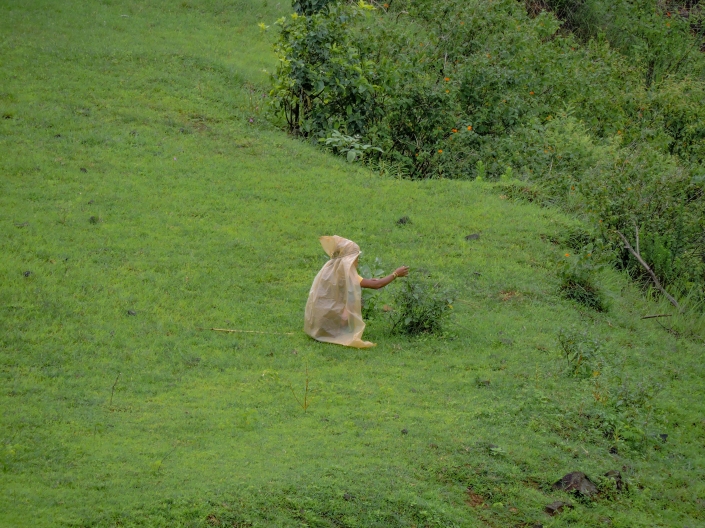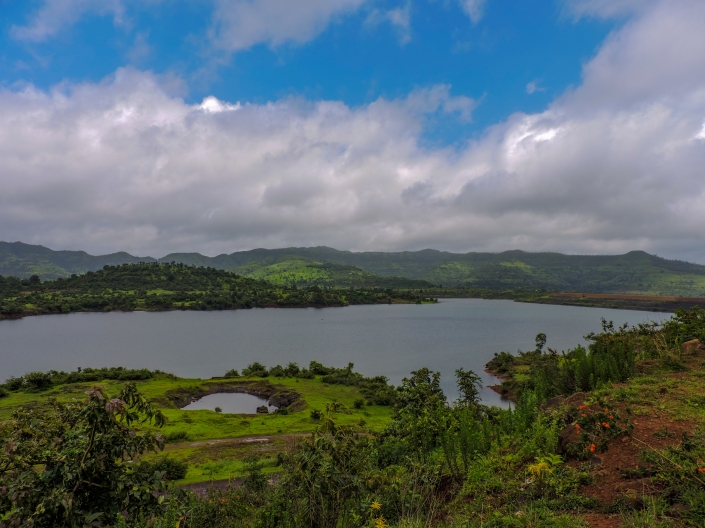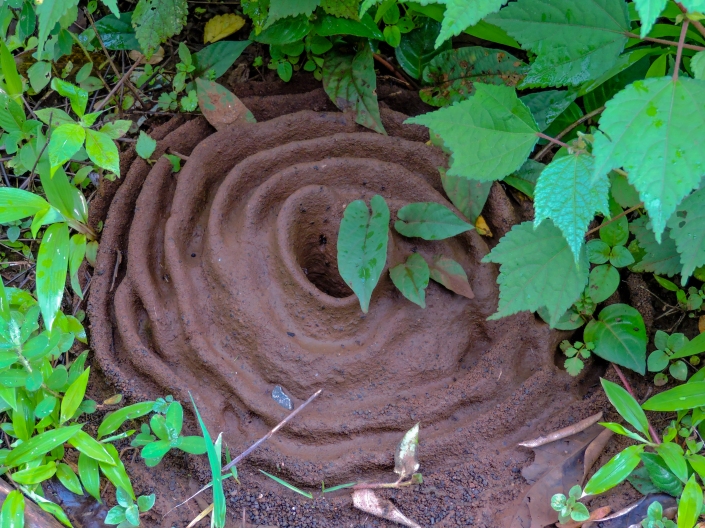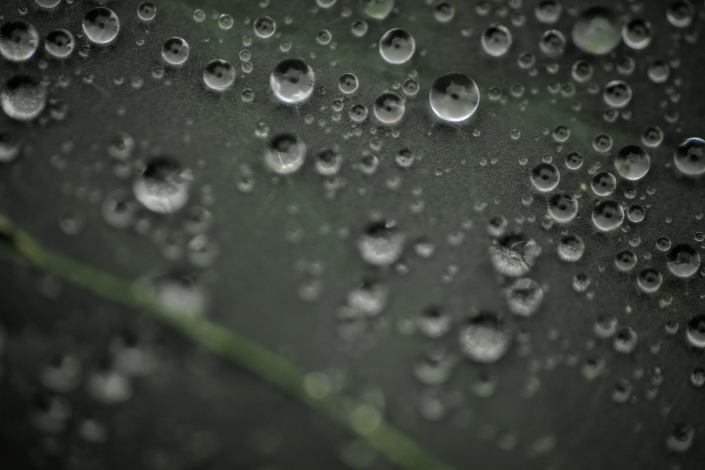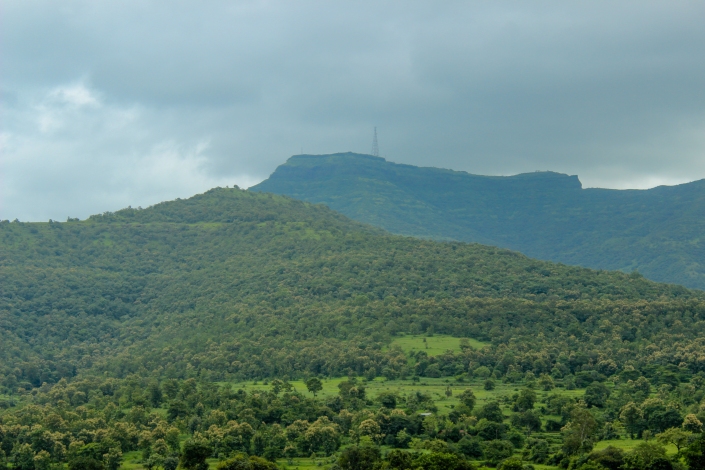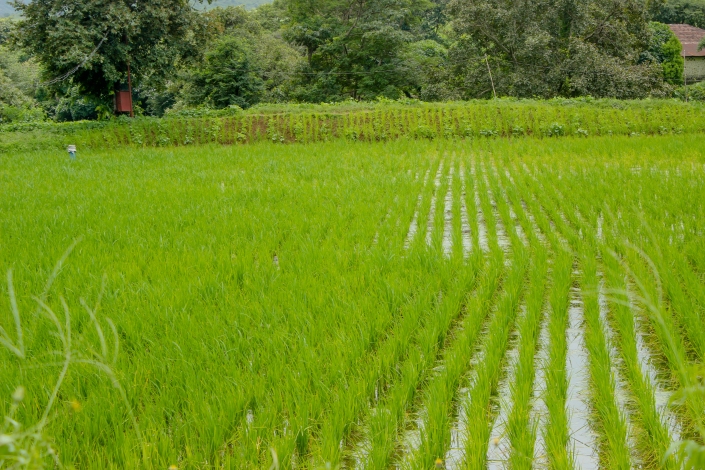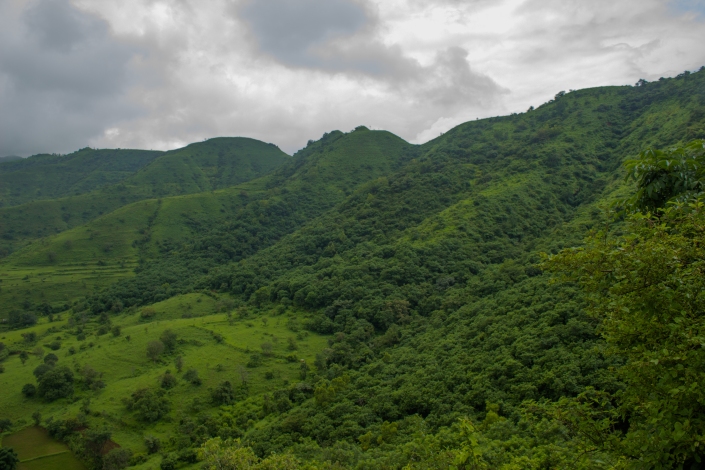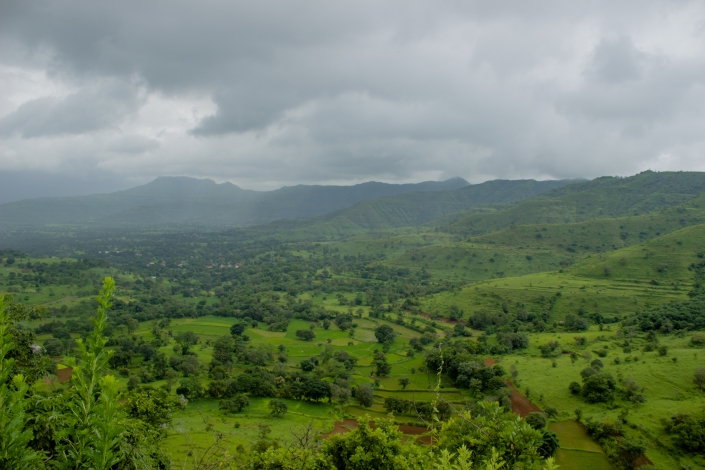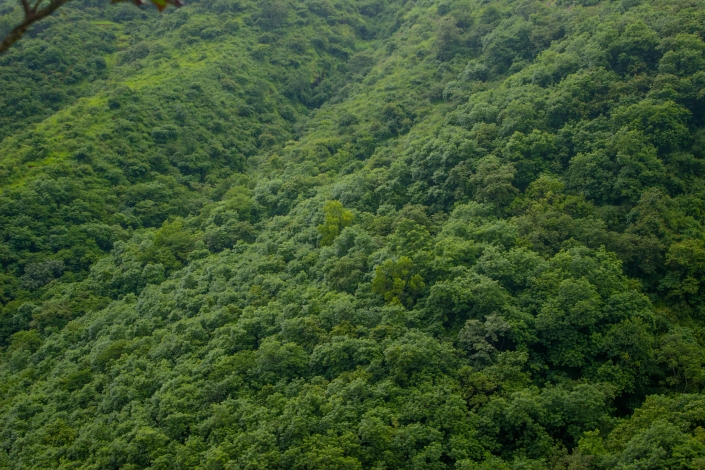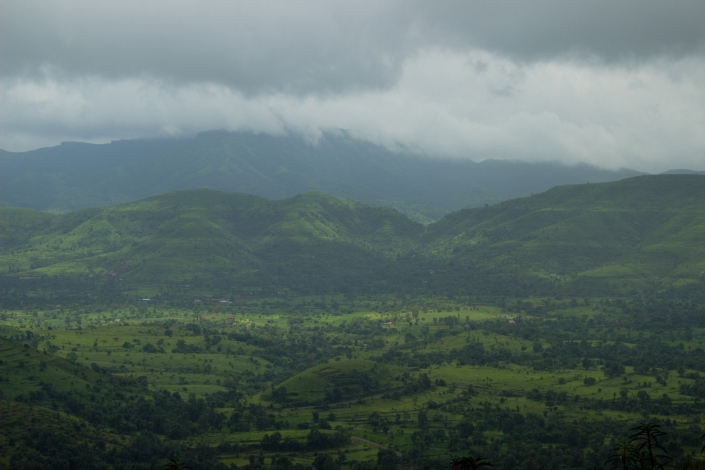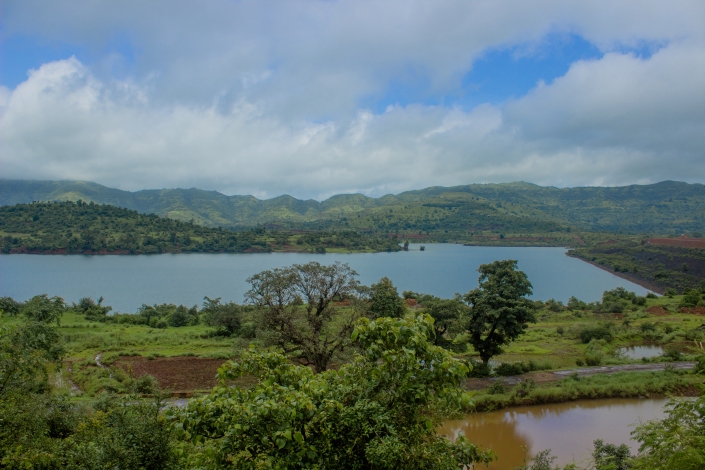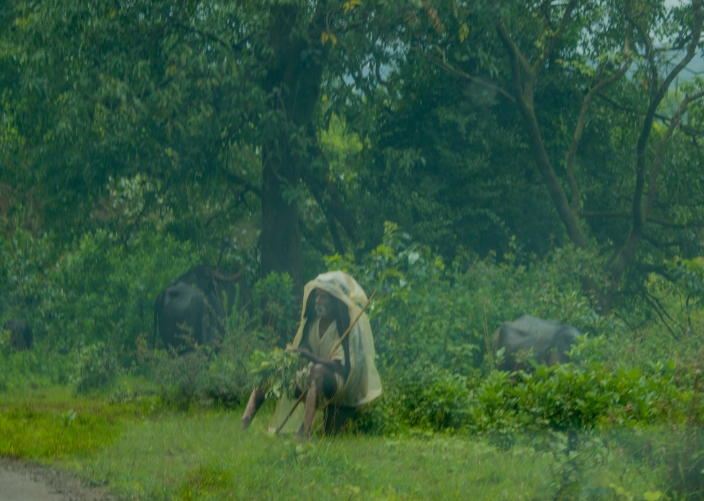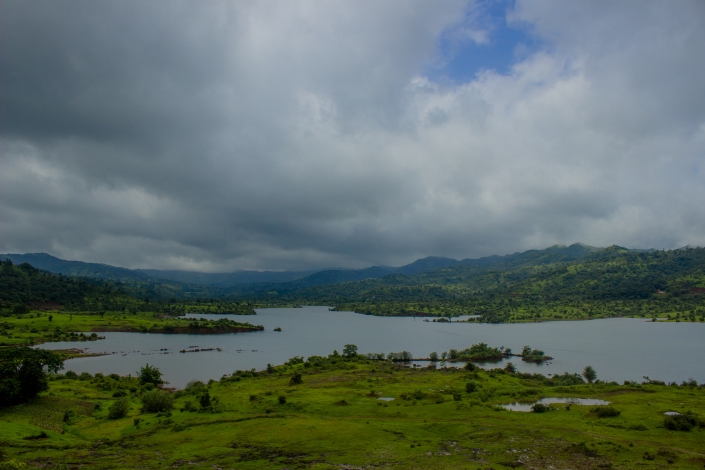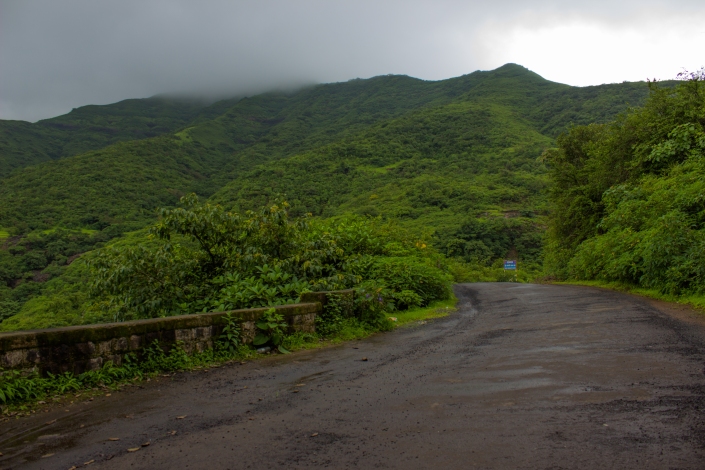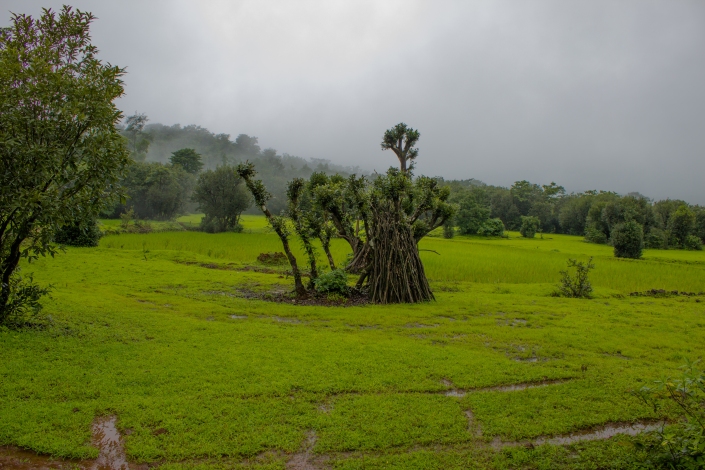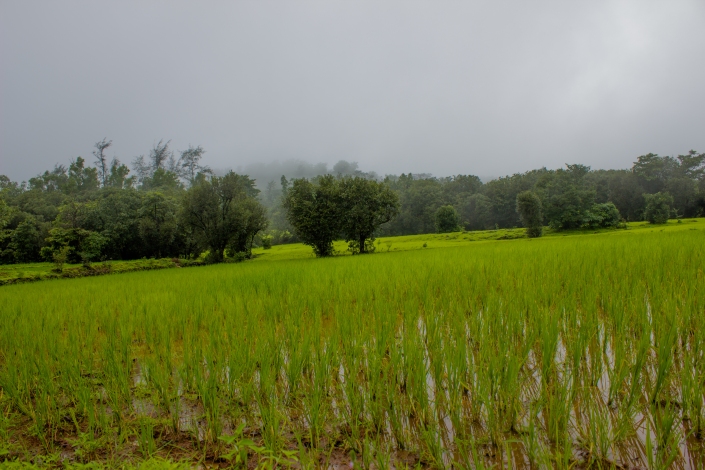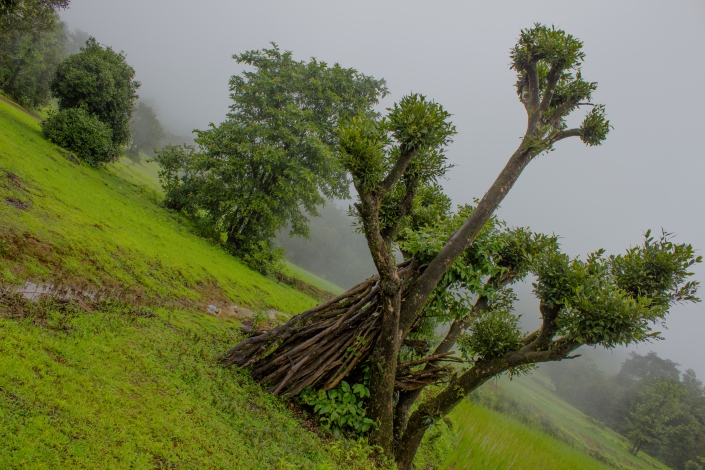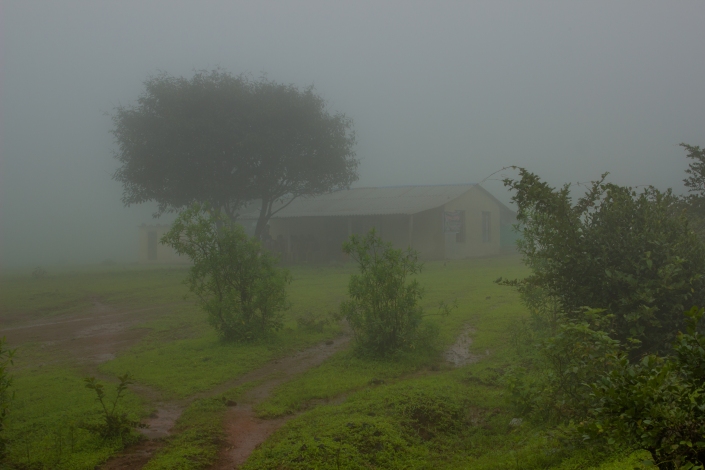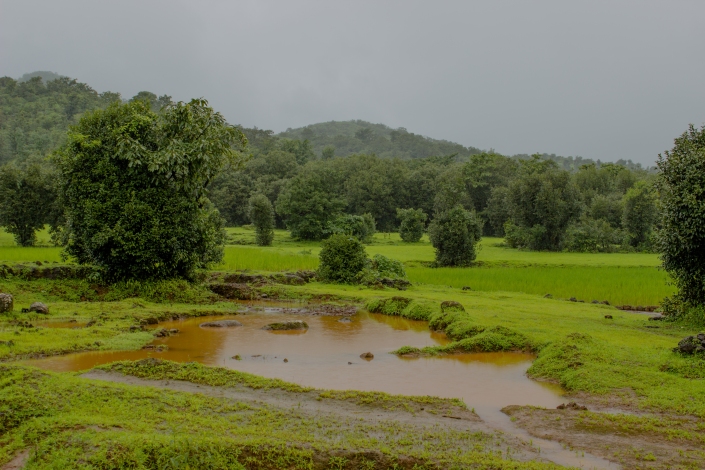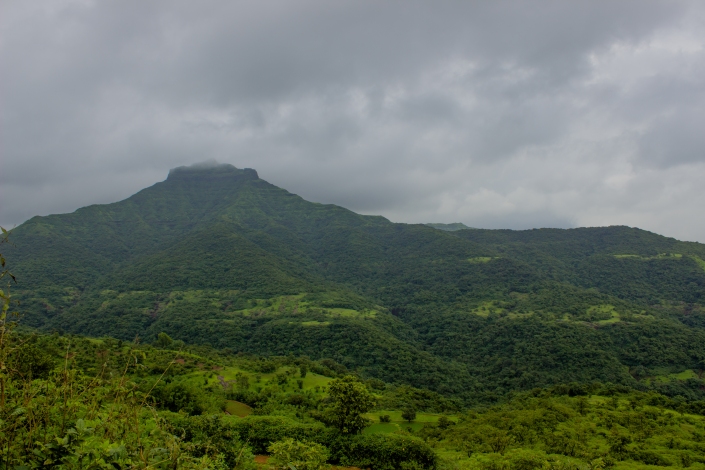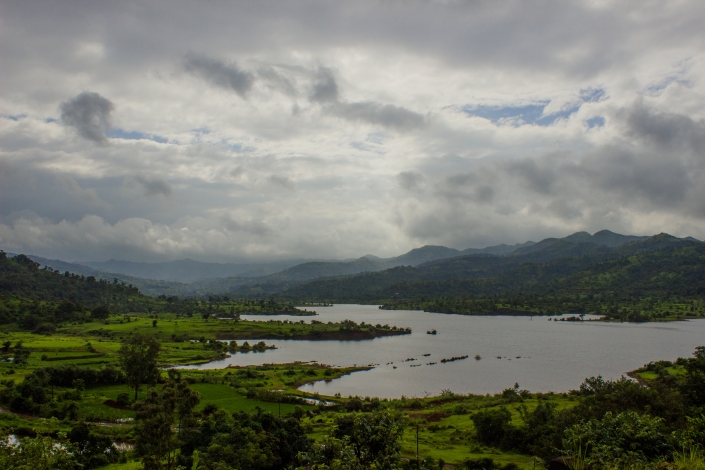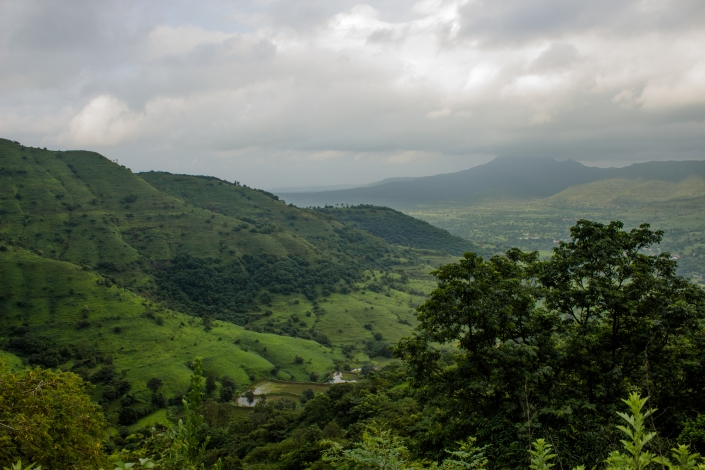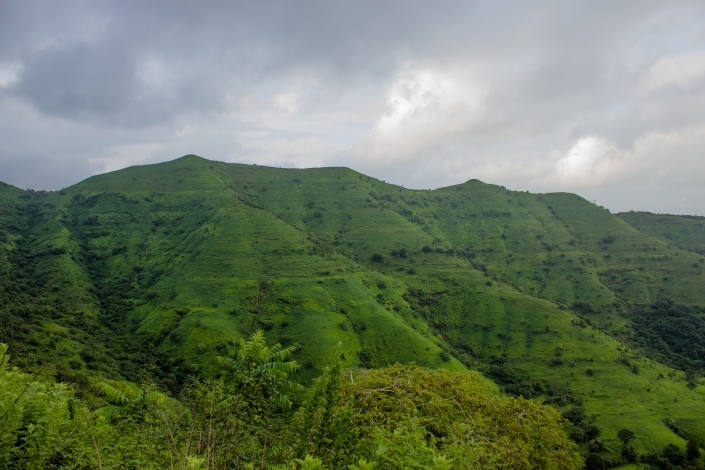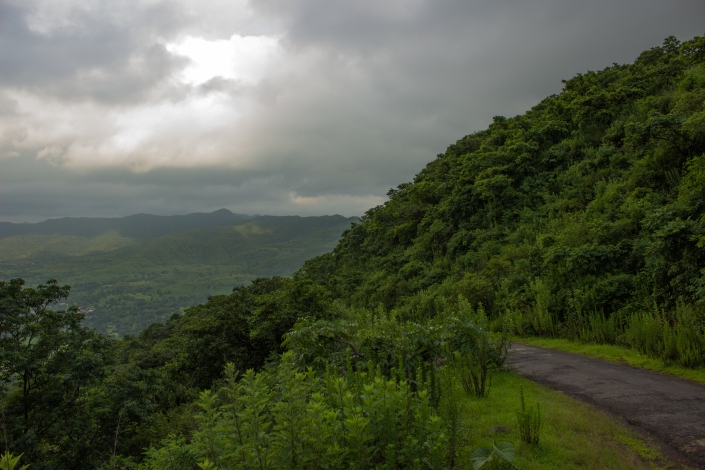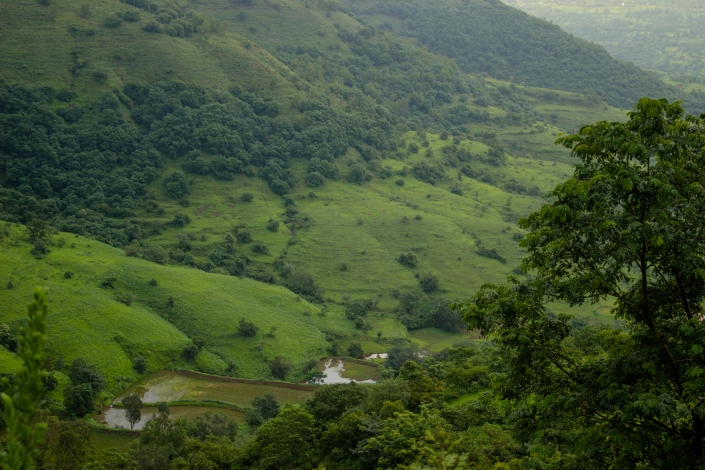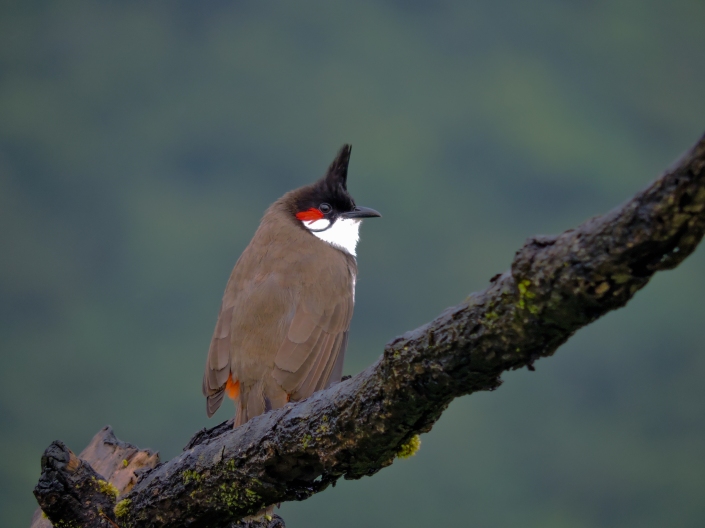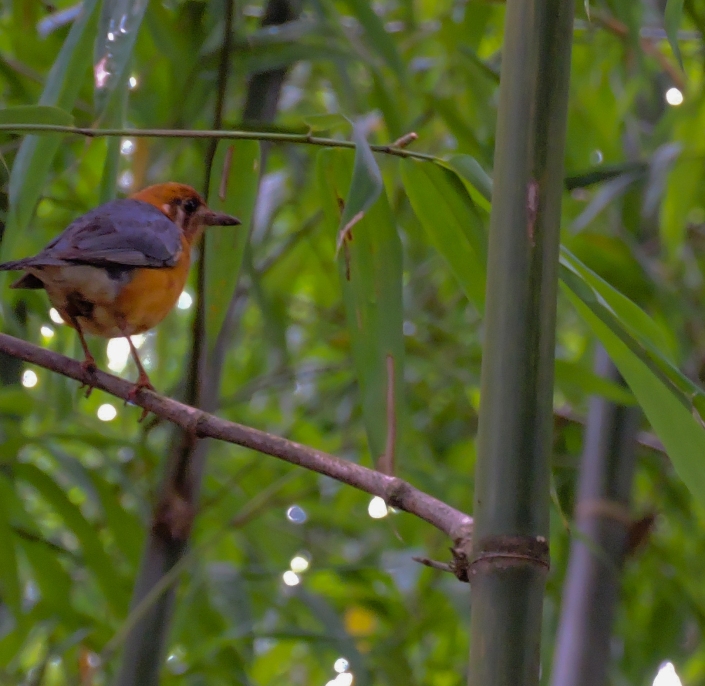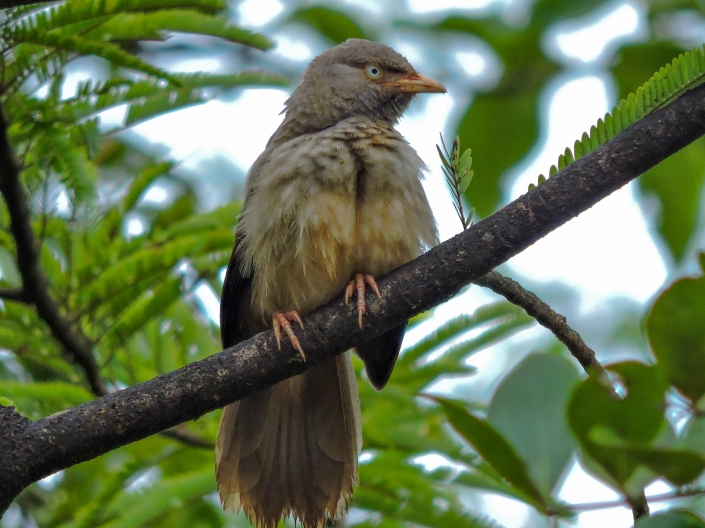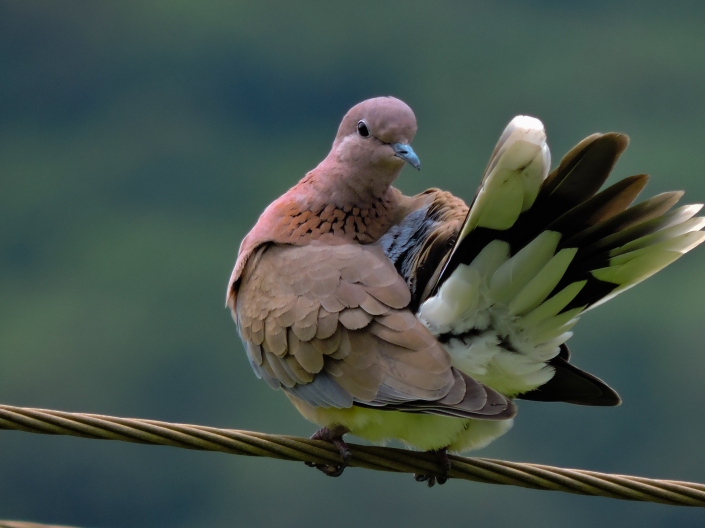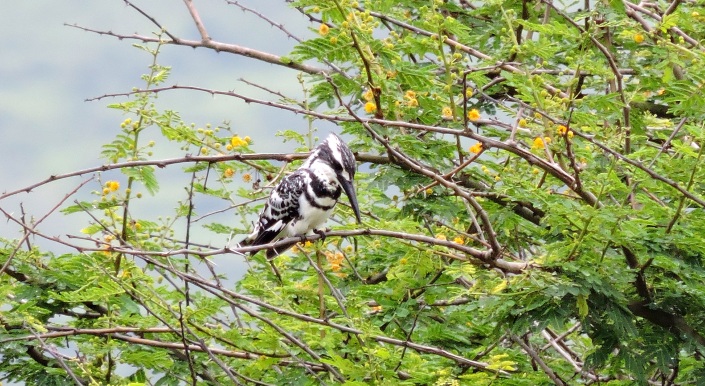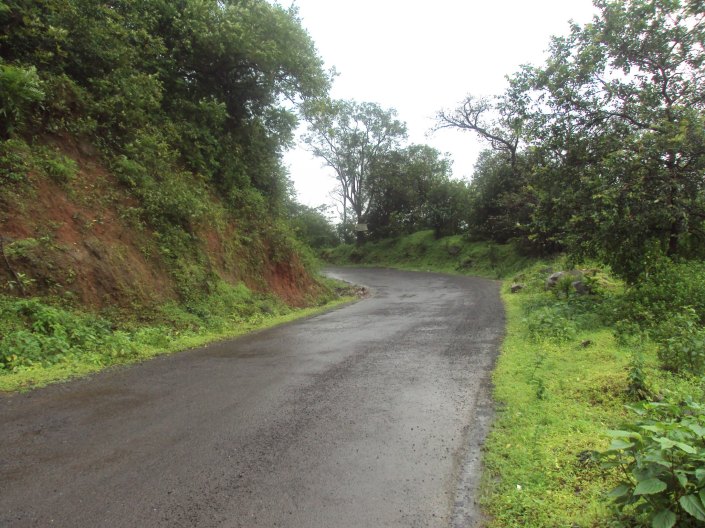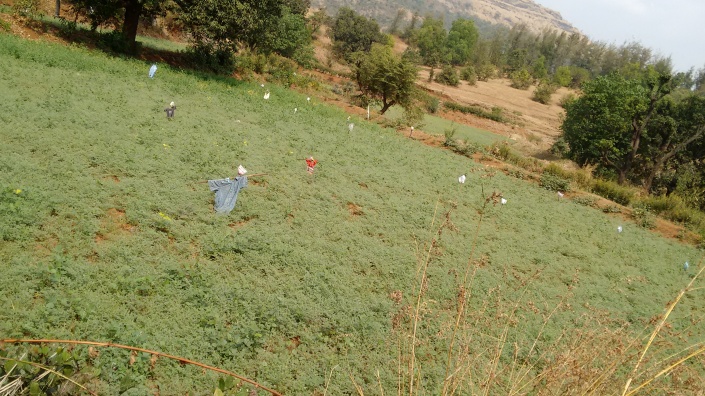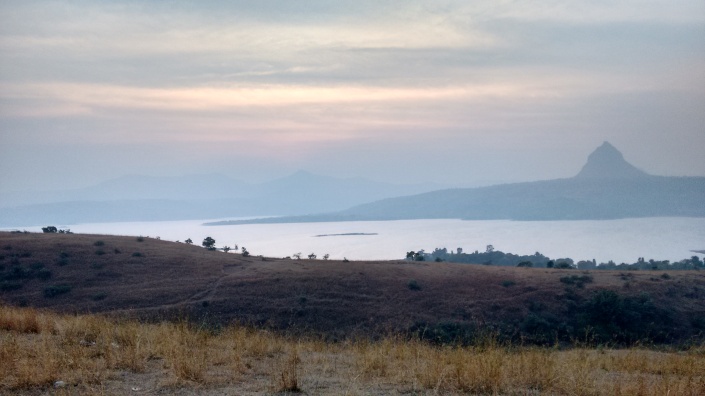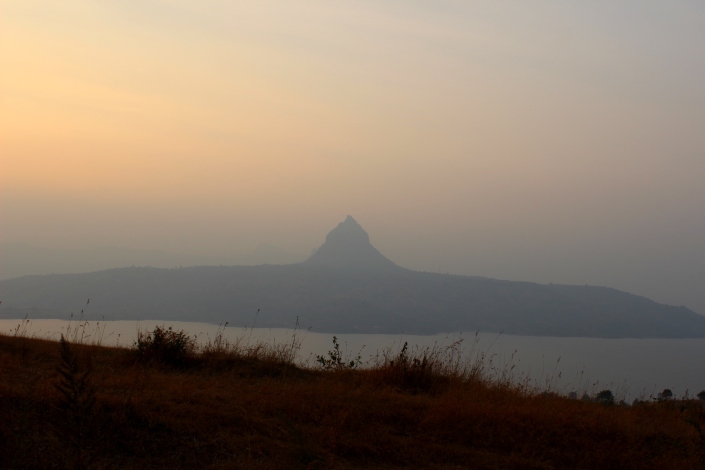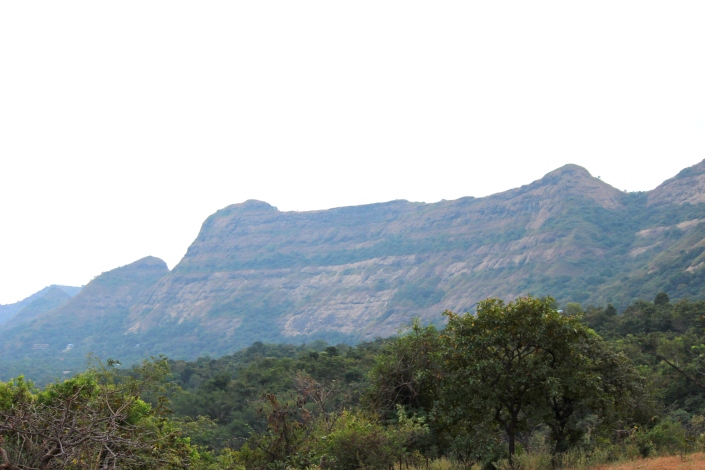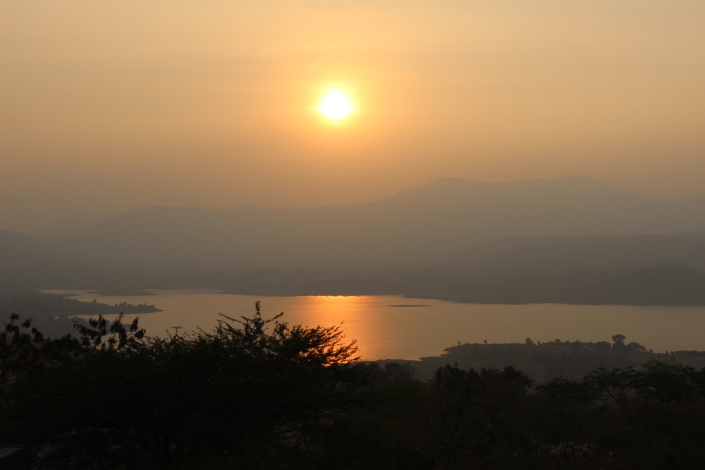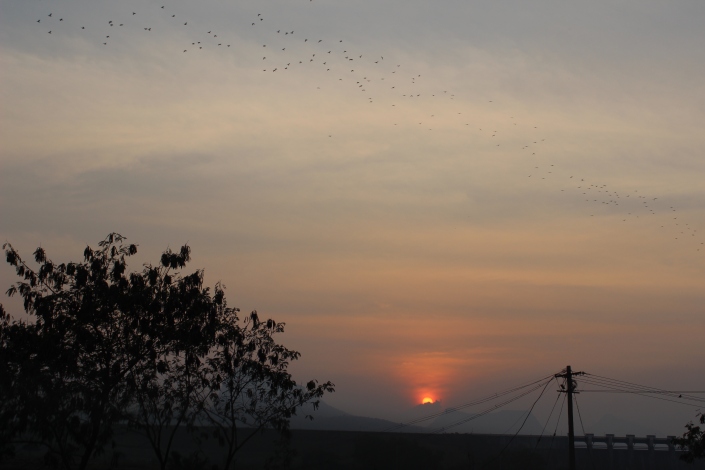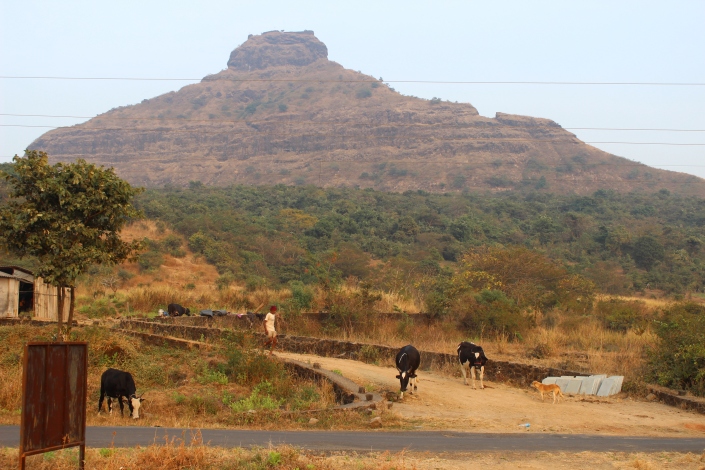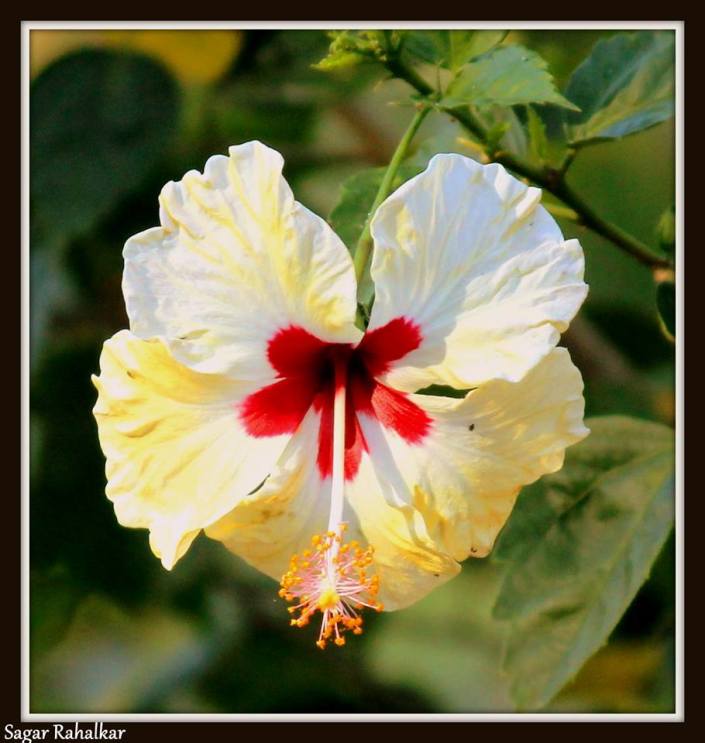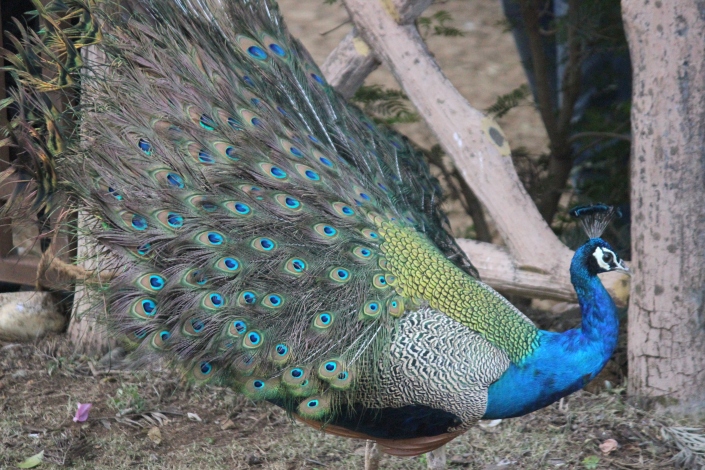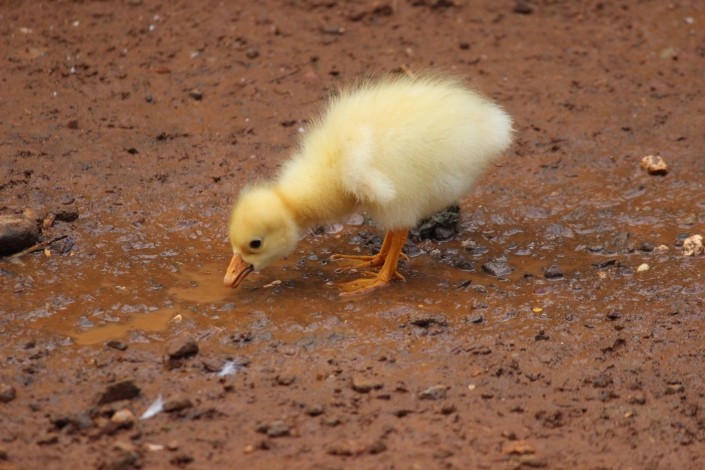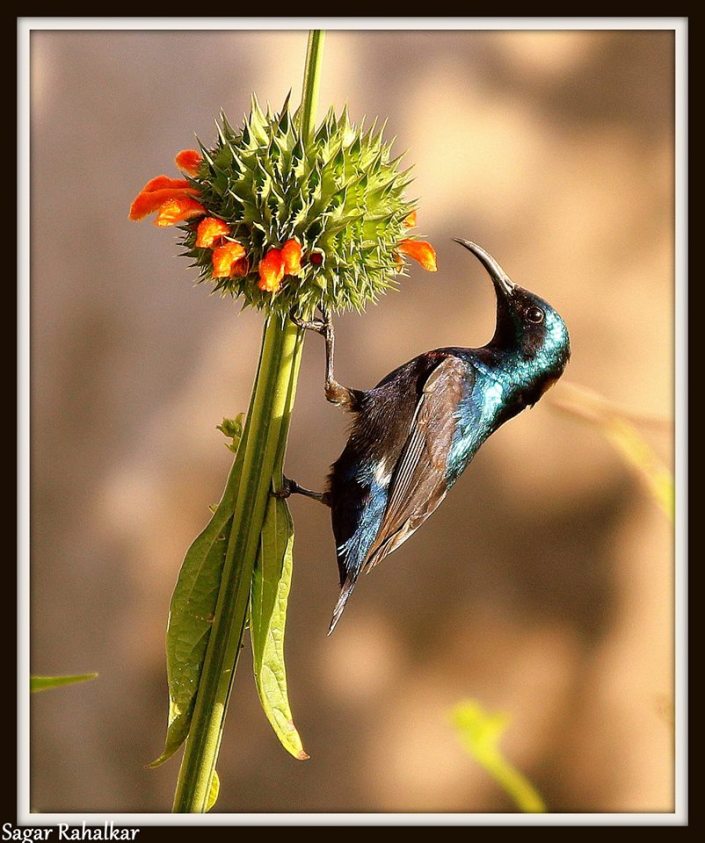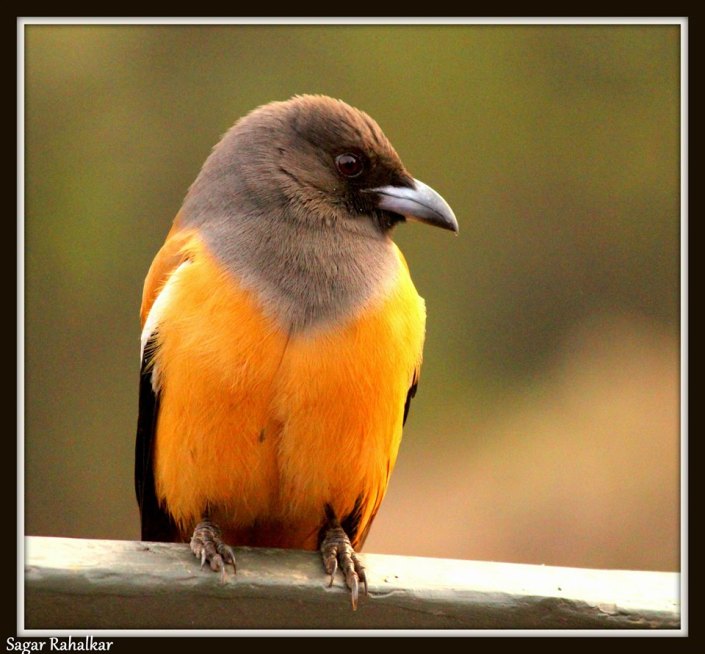Magical Kaas
What is Kaas?
It is a biodiversity hotspot known for various types of seasonal wild flowers bloom and numerous species of endemic butterflies annually in the months of August and September. The plateau is situated at an altitude of 1200 meters and is approximately 10 square kilometers in area. Kaas has more than 850 different species of flowering plants.These include orchids, shrubs such as the Karvy, and carnivorous plants such as Drosera Indica. It has been declared as UNESCO World Heritage Site.
The plateau is largely formed of basalt which is directly exposed to atmosphere. The basalt rock is covered by a thin cover of soil formed due to erosion and has accumulated a layer of not more than an inch or so. This soil is neither black nor lateritic. At certain places water gets accumulated because of uneven surface. The plants growing on Kas plateau are typically of herbaceous nature of like grasses. The small shrubs and trees are located at the periphery of the plateau at Kaas plateau.
Where is it located?
Kaas plateau is a plateau located around 25 km from Satara. There are two ways to reach Kaas. One the more direct way from Satara and another from Tapola via the link road connecting Mahabaleshwar and Panchgani to Kas Pathar. Kas plateau is 20 km away from Northern part of Koyana Sanctuary. The major portion of the plateau is reserve Forest. Kaas lake (built 100 years ago) is a perennial source of Water supply for western part of Satara city by gravity. The flora of Kaas are around the locality of that area. Satara is the nearest railway station, while Pune is the nearest Airport.
Note – Currently only 3000 visitors per day are allowed to visit Kaas and they need to do an online registration prior to the visit. The registration can be done at https://www.kas.ind.in/
Indigofera dalzellii Common name: Sheild Indigo, Dalzell’s Indigo • Marathi: ढाल गोधडी Dhal godhadi – This is a perennial herb with short stem and a woody rootstock. Slender, prostrate branches, about a foot long, are covered with silvery hairs. Alternately arranged, stalkless leaves, 1.5-3 cm long, are elliptic-oblong, may look roundish sometimes. Flowers occur in 10-20 flowered racemes in leaf axils. The spine of the raceme is 3-angled, which lend the name to one of its species names triquetra. Purple flowers are about a centimeter long. The standard petal is circular. Flowering: August-September.
Undri – Linum mysurense – Undri is an annual herb, growing up to a foot high. Slender stems are erect and leafy, and branched at the top. Oblong stalkless leaves are alternately arranged, and are 1-2 cm long. Small 8 mm yellow flowers occur in a large corymblike panicle. The flowers have 5 petals and 5 stamens.
Abolima – Murdannia lanuginosa -Marsh Dewflower is an erect or nearly erect, branched herb; fibrous roots often tuberous, slightly thickened; stem angular, hairless or hairy. Leaves are 3-6 x 0.4-0.8 cm, stem, alternate, oblong-lanceshaped or lanceshaped, margin wavy, tip pointed or shortly tapering, base rounded, more or less stem-claspinge, prominently striped, hairy; sheath 8-12 mm long, hairy. Flowers are 5-6 mm long, 1-2, orange-yellow, in leaf-axils to the upper leaf-sheaths; flower-stalks 2-4 cm long, erect or slightly bent in fruits, jointed at middle, hairy below the joints; bracteoles 2 at joints, about 1 mm long, membranous, ovate, blunt. Sepals 3, free, slightly unequal, about 6 x 2 mm, elliptic-oblong, subpointed, straw-coloured, persistent. Petals 3, free, orange-yellow, bluish when dry, obovate, slightly longer than sepals. Fertile stamens are 3; filaments bearded; anthers 2-celled; staminodes 3. Capsule 5-7 mm long, oblong, trigonous, cuspidate with persistent style, 3-celled; seeds 3 or more, angular, pitted. Marsh Dewflower is found in Peninsular India. Flowering: October-November.
Nisurdi – Paracaryopsis coelestina – Common hill borage is a flower which looks like a beautiful white version of the famous blue Forget-Me-Not. The white, or pale blue flowers, 6-10 mm across, have a shape similiar to forget-me nots, but have a blue shaded center. It is an erect perennial herb, 1-2 m tall, with red stems and branches. Basal leaves are very large, up to 25 cm long, ovate-heart-shaped, carried on a foot long red stalks. Stem leaves are smaller, 5 cm long, carried on short stalks. Flowers are borne in forked racemes on branch ends. Common hill borage is native to India, found in Western Ghats.
 Kaas lake (built 100 years ago) is a perennial source of Water supply for western part of Satara city by gravity.
Kaas lake (built 100 years ago) is a perennial source of Water supply for western part of Satara city by gravity.
Ceropegia vincaefolia (local known as Kandilpushpa/Kandil kharchudi) – Jaini Ceropegia is a very rare and threatened herb, endemic to the Sahyadri Hills. It is a small erect herb, 10-20 cm high, with tuberous root. Tubers are hairless, 2-3 cm. Slender stem is green with oppositely arranged leaves. Leaves are linear-lanceshaped, 2-5 cm long, hairy on both sides, margins with stiff hairs. Flowers occur singly in leaf axils. Slender flower-stalks are 6-10 mm long. Sepals are lance-shaped, 3-5 mm. Flowers are 2 cm long, tubular, with the tube enlarged at the base and white. Five narrow linear petals are 1 cm long, reddish-purple, and hairy at the base. Sometimes the flower is completely purplish-red. Flowering: August-October.
The majestic Thoseghar waterfalls with height of around 350 meters and is number 4 in the list of tallest waterfalls in India.
In and around Kaas
There are so many interesting places to explore within a short distance from Kaas, some of the places are as below:
| # | Place | Distance from Kaas |
| 1 | Thoseghar Waterfalls | 45KM |
| 2 | Sajjangad | 33KM |
| 3 | Vajrai Waterfalls | 4KM |
| 4 | Step-well – Limb | 38KM |
| 5 | Menavli | 62KM |
| 6 | Dhom Dam | 68KM |
| 7 | Wai | 59KM |
| 8 | Mahabaleshwar | 38KM |
| 9 | Bamnoli (For Vasota Trek) | 14KM |
Blossoming of flowers at Kaas every year is truly a magical phenomenon. However, since the Kaas has become popular, it has seen exponential rise in number of visitors. Not all visitors follow enough hygiene to keep the Eco-system intact. The worst part is people walking around the plateau. There are so many rare species of flowers which are microns in length. They easily get thrashed away by people walking around. Apart from this the network of resorts is quietly coming closer and closer to the Eco-sensitive zone adding to the trouble. I was taken aback seeing people smoke around though smoking is strictly prohibited in the area around. Though the government is undertaking conservation efforts, I feel lot needs to be done in order to secure this natural wonder for generations to come.
Tadoba Wilderness
Tadoba Wilderness
Tadoba Andhari Tiger Reserve is a tiger reserve in Chandrapur district of Maharashtra state in central India. It is notable as Maharashtra’s oldest and largest national park. It’s a typical central India forest with mostly open grasslands making it easier to spot the wildlife. Total area of the reserve is 1727 km2 which includes 625.40 Sq. Km of Core Zone and 1101.77 Sq. Km of Buffer Zone. The park was created way back in 1955.
Tadoba-Andhari Tiger Reserve derives its name from the Tadoba Lake which named after “Taroba” or “Taru” god, worshiped by tribal people who live in the dense forests of Tadoba and name Andhari derived form Andhari River that flows through the reserve.
Legend holds that Taru was a village chief who was killed in a mythological encounter with a tiger. A shrine dedicated to the God Taru now exists beneath a huge tree, on the banks of the Tadoba Lake. The Gond kings once ruled forests in the vicinity of the Chimur hills. Hunting was completely banned in 1935. Two decades later, in 1955, 116.54 Sq. km. was declared a National Park. Andhari Wildlife Sanctuary was created around the National Park in 1986, and in 1995, both the Protected areas jointly declared as Tiger Reserve.
How to reach Tadoba –
If traveling by train, Chandrapur is the nearest railway station (around 45 KM) and by Air, Nagpur is the nearest airport (around 115 KM) . Both the Chandrapur railway station and the Nagpur airport are very well connected to all major cities across India.
Where to Stay –
There are lot of options for staying around Tadoba reserve however I found the MTDC resort quite descent and affordable. The MTDC resort is located very close to the Moharli range and offers clean and descent A.C accommodation along with restaurant facilities. The resort can be directly booked online from the official MTDC portal at https://mtdcrrs.maharashtratourism.gov.in/Account/Login.aspx
Day 1 – Afternoon Safari
We started from our journey to Nagpur from Pune by an early morning flight. Having reached Nagpur by around 9:15 AM, we were then transferred to Tadoba Tiger Reserve by a private car. I had booked the accommodation at MTDC Resort. The resort is located very close to the Moharli gate and quite well maintained. It also has its own cafe / restaurant which serves breakfast, lunch and dinner. More details on the resort can be found at https://www.maharashtratourism.gov.in/properties/property/mtdc-tadoba
We reached the MTDC resort by around 12:30 PM, got freshened up, had some quick lunch and got ready for the afternoon Safari. The Jeep came to pick us on time and we were all set for our first safari at the Tadoba Andhari Tiger Reserve.
Our first safari was booked for the Buffer zone. Upon getting the necessary permits and getting accompanied by local forest guide, we entered the jungle. Within no time, our driver opened full throttle and zoomed the jeep with all possible pace. I was wondering why we were going so fast! In some time, we reached a spot known as “Waghdoh” (Wagh means Tiger and Doh means a small pond). The guide told us that this place Waghdoh was territory of a 15 year old male Tiger known as Scarface. This male tiger had lost his right eye during fight with some other tiger. As per our guide, this place was a routine sit-out area for this Scarface tiger hence the probability of spotting him was high. While we were there at the Wagdoh, all we could spot was lot of monkeys, some birds (Treepies, BulBuls, Shikra and Jungle Crows). We waited, waited and waited almost for 2 hours. But, unfortunately, no sign of any tiger around! With a feeling of disappointment, we finally decided to move out and try exploring some other areas of the Buffer zone. We then went for a drive around the Irai dam at sunset where we could spot some wooly necked storks, Open Bills and a herd of Indian Gaur. We returned back to MTDC Moharli resort with no Tiger spotting for the day. As it was an early monsoon period, it rained heavily throughout the night with thunderstorms and lightnings!!
Day 2 – Morning Safari
With all new hope, we prepared our-self for an early morning Safari. Again our safari was booked for the route through Buffer zone. Even before the sunrise, we were at the gates of the park. With all necessary permits and the accompanying guide, we marched onto our designated route deep through the forest. The very first spotting was of the nest of Grey Headed Fish Eagle. We couldn’t spot the bird in or around the nest though. Soon a herd of Indian Gaur crossed our way.
With a few clicks we moved ahead. There was some surprise waiting for us. We saw something moving around the bushes patiently waited nearby. In short time, we could spot a sloth bear crossing the road ahead of us.
Trust me, spotting Mr Bear requires same or more luck than spotting a tiger! With all the excitement, we proceeded further to small waterhole deep into the forest which was supposedly the territory of Tigress named Sharmili. On our way, we noticed some bird movement in the roadside bushes. When we stopped to figure out the bird it was Rain Quail. The bird moves pretty fast on ground and gets camouflaged easily.
Sharmili was known to be spotted around this area with her 2 cubs. While at the spot, it was all silence. No movement, no calls at all! All I could hear and see was some frog making noise in the pond and a crested serpent eagle hovering over us.
By this time the sun had started heating up making us sweat. We waited for almost 3 hours with no luck at all! Finally, it was time to call off the safari and we started on our way back. Just as we left that spot, we noticed some movement in the bushes! Guess what? There were 2 cubs of tigress Sharmili who were happily playing with each other. It was truly a delightful experience. Though we couldn’t spot their mother Sharmili!
Day 2 – Afternoon Safari
Coming back from a tiring morning safari , we quickly finished our lunch at got prepared for the afternoon safari. Again our safari was booked for the route through the Core Zone. We started our drive at around 2:30 PM and soon were greeted with spotted deer, neelgai and sambhar. We then coursed towards the famous Tadoba lake. While the sun was generating all possible heat, the atmosphere around the Tadoba lake was quite a bliss with a cool breeze around. An oriental honey buzzard was sitting high on a tree while a crocodile was peeping around the banks of the lake.
The road besides the Tadoba lake is also the route for state transport buses running between the nearby villages. Unfortunately this creates traffic problems at times. While we were wandering around the lake, we suddenly heard call from barking deer. We tried to move in the direction of the call and got in alert mode looking for any signs of the predator’s presence. After waiting for a while, we had no luck and decided to move ahead. The guide stopped the car roadside and showed us a nightjar who was so much camouflaged that it was hardly visible!
The bird was quite bold and didn’t bother to move even after we attempted closeup shots. All of a sudden, there was hustle and bustle of jeeps gathering around, seemed that there was some news on the tiger spotting in the area nearby. We moved back and tried to follow some calls that were coming from the bushes. We didn’t had to wait long before a sub-adult cub of tigress Maya walked in style. The cub was least bothered about all the vehicles around and crossed the road before vanishing into the bushes other side.
The cub was truly a show stopper for a while! Being very satisfied of spotting a Tiger so close, it was time up for the safari and we started on our way back to the resort. We made a small pit stop to gaze at the beautiful Indian Roller and icing on the cake was spotting the Brown Fish Owl 🙂
Day 3 – Morning Safari
Finally, on day 3, it was our last scheduled safari. We were all ready for the early morning safari greedily hoping for some more better sightings. The last safari was planned around the Telia Lake. The Telia Lake is the territory of the famous tigress Sonam. The Discovery Channel made an exclusive documentary named ‘Tiger sisters of Telia’ which showed how the 4 tiger sisters Mona, Geeta, Lara and Sonam first separated in territorial fights but later united back to hunt in packs. This was an extremely rare behavior as tigers hunt all alone as compared to other wild animals (like Lions, wild dogs) who hunt in packs/group. Having heard all these stories about Telia Lake, all we were hoping was a glimpse of the tigress Sonam. While we were driving around the Telia Lake, we could see lot of jeeps gathering around the high grassland just besides the lake. We soon joined the group of spectators. However, everyone was looking with curiosity and trying to find some clue about the predator. We waited for a while but no movement, no call at all. All silence! After spending about an hour at same place, there was a slight movement in the tall grassland. Folks waiting so long were all 0n there toes! We could now see the yellow and white spots which were the ears of the tiger.
Slowly, the predator started making move and finally came out of the bushes! Yes, it was Sonam. She didn’t disappoint us. She walked gracefully on the ramp, gave some poses to shoot and then settled down deep in the bushes other side of the lake.
It was truly a spectacular sight to watch Sonam proudly guarding her territory. No wonder she is the queen of Telia Lake. Our last safari in Tadoba was made special by Sonam. Though it was not over yet. On our way back, we spotted a monitor lizard which on look out of prey around the bushes.
By now throughout all the 4 safaris, we had spotted enough of wild species. The Tadoba eco-system also boasts rich flora. One of the highlights was presence of the “Ghost Trees”. These are the trees which glow in dark due to the skin color. Scientific name for the tree is Sterculia urens.
What to expect from Tadoba Andhari Tiger Reserve?
Almost each and every person visiting a jungle like Tadoba has a sole motive of spotting a Tiger. I have seen people largely disappointed just because they couldn’t spot a tiger during the safari. The jungle is home to so many other species who are equally important even though tiger lies at the apex of the food chain. But to maintain the balance of the eco-system and to sustain the health of the forest, each and every creature plays a vital role. I personally love Owls. I was so very happy when I spotted the Brown Fish Owl. I would consider spotting this owl was more difficult and required more luck than spotting a tiger. (We managed to spot tigers in 3 safaris out of 4). So, we need to appreciate and respect all the creatures equally. Spotting a tiger is not in our hands and just a matter of luck.
Overall, Tadoba Andhari Tiger Reserve is one of the best places in central India to spot wildlife especially the Tigers. It is also in the close vicinity of other reserves like Bor Wildlife Sanctuary, Umred Karhandla Wildlife Sanctuary etc. There have been instances of tigers migrating from one wildlife sanctuary to other all passing through human settlements.
We all must act with sense of responsibility when we visit such nature reserves. I have commonly seen tourists shouting, talking loudly, playing songs and littering right in the middle of the jungle and still expecting to spot good wildlife!! We are all fortunate to be part of such bio-diverse country like India. But we often lack in our efforts towards conservation of this natural wealth. It’s time to act with responsibility before it gets too late!
Vasota Trails – Deep into the wild……..
Since last couple of years, I am certainly evolving as an avid traveler and a photographer. I love exploring new places and specially the offbeat journeys. But somehow I had not experienced trekking and mountain hiking till I got the opportunity to explore deep evergreen forests of Koyna & Sahayadri and the majestic Vasota fort.
The Vasota trek was on my mind since long and finally I could make it happen last month. For me it was an experience of a lifetime. Here’s more about my experience:
History of Vasota:
We have to go back to the times of Sage Vasishtha to know how exactly old is the fort. It’s believed that a disciple of Vasishtha, a sage by the name Agasti, came to reside on a mountain on the banks of river Koyana. He named the mountain after his mentor. Later the mountain was fortified and converted into a military station. In the course of time, fort Vasishtha was pronounced as ‘Vasota’.
This fort is believed to belong to the Shilahar dynasty era, and probably named Vasota due to the name Vasantgad given to it during that era. Shivaji took Javli and other forts in the Konkan region but Vasota eluded him. When Shivaji was trapped on Panhalgad he dispatched a battalion from his main army and won Vasota on June 6, 1660. Shivaji Maharaj named the fort “Vyaghragad” (Vyaghra – means tiger), owing to its difficult natural defense.
Later in 1706, Tai Telini brought the fort under her control. The very next year Peshwa Senapati Bapu Gokhale fought with her. After 8-10 months of intense battle, Bapu Nadkarni conquered the fort. In 1818 the British bombarded the fort with heavy artillery, destroying many buildings on Vasota (Chandika mandir, Daru-kothar, etc.) and looted property worth 5 lakhs.
My Experience:
We started from Pune by bus at around 12 AM and reached Bamnoli by 4:30AM. It was chilled outside. Now when you are out for such treks and trails, its important that you step outside of your comfort zone. And trust me its rewarding! I rolled out my sleeping bag right on the banks of Koyna backwaters and went asleep for a while. The moon was shining bright and the tree besides me was full of fireflies. It was kind of illuminated. Wow, what else do you expect from a perfect camping outdoor? This was way better than spending the night in hotel or a room!
Early morning sun rays @ Bamnoli…
Waterways are the main mode of transport in this area…
The beautiful waterscape @ Koyna…
We are lucky enough to have bikes and cars at our service 24X7. But life is not so easy for all. There are around 7 villages remotely located in the Sahayadri Tiger Reserve, and water transport is the only means of commutation for people living in those villages. They are far away from all the modern leisure but still they are surviving a healthy life in close vicinity of mother nature!
While we are running out of fuel resources, its important to utilize natural and non-conventional energy resources. There are lot of windmills hosted in area around Bamnoli and Kaas…
Trying out some different angle shots using my sports cam…
The surroundings were so mesmerizing that I could hardly resist myself from clicking these “Selfie’s” …
Fish eye view from the boat that sailed us across the waters….
Picture perfect landscapes near Sahayadri Tiger Reserve…
The entrance of Koyna Wildlife Sanctuary…
This is the territory of the graceful Royal Bengal Tiger….
Very old and ancient temple of Lord Ganesh at the bottom of the fort…
A typical water stream passing through the forest….this is one of the areas where high animal activity could be observed…
The first view after a pretty tough climb….
Hanuman temple on top of Vasota Fort….
Areal views of the Koyna back waters and the Sahayadri Tiger Reserve…
Ruins of another old temple on Vasota fort…
The dense forest of Jawali…The great warrior king Shivaji, assassinated Afzal Khan by inviting him to Jawali…Shivaji’s army was well versed with the region and took advantage of the same….The forest is also full of leeches especially during monsoon….
There are only a few spots in the forest where sunlight touches the ground…
Beautiful horizon at Sunset – Bamnoli…
So, I finally made my trekking debut with this super amazing trail. Below are few of my observations:
- The forest around Vasota is so thick and dense, that it’s hardly possible to sight wild animals here. Its completely different from the grassland type jungles of Central India (Kanha, Tadoba etc) where animal sighting is much easier. So don’t really get upset if you don’t get to spot a tiger, leopard, bear etc. Its quite possible that these animals are spotting us from some hideouts.
- Same is the case with birds. Due to very thick vegetation, its tough to spot birds. Although you can hear melodious bird calls all the time.
- I encountered few groups of people who were shouting and singing loudly all the time! Disgusting! People should at least behave themselves when they are in such wild outdoors. Such idiotic behavior would further lessen the chances of spotting any wild animals around.
- We must strive hard to save and conserve these natural treasures. Once you are there in forests like Vasota, trust me, you completely forget all your tensions, worries and you transit into a whole different world which is extremely joyful!
Bazaar Walk – Wandering through the streets & lanes of old Pune……
The history of Pune (a city in Maharashtra, India) begins in the 6th century, and is closely linked to the history of Shivaji, the founder of the Maratha empire, and to the Peshwa, the ministers of the Maratha empire. Having said this the city has got a rich cultural inheritance. Since last decade and a half, the city is transiting towards more of a modern and “smart” city. But the cultural and traditional values are still alive! Especially in the old part of the city.
I was born in late 80’s and I spent my childhood in parts of old Pune. I very well remember people used to shop around mainly in areas like Lakshmi Road, Tulshi Baug, Mandai, Ravivar Peth etc. But since last decade, with introduction of so many lavish malls around Pune, a lot of people tend to shop at these malls. And the recent trend? Online shopping! Yeah…. it has made us more lazy. People have gone crazy behind the “Big Billion Day” sales and simply order absolutely anything just from their mobile or PC. So certainly, effect of these modern trends can be seen in the local markets of old Pune.
Last month, Janwani had organized a small event of exploring old shops in Pune city. I was waiting for this event since long and there was no chance I could miss it. And believe me, this 2 hour walk through streets of old Pune, made me relive the city and its values. Now my belonging to this city has become stronger!
Here’s a photo essay of the walk:
This is one of the few old shops near Tilak Statue @Mandai selling betel leafs. The shop owned by “Ghotavdekar” is more than 100 years old. Betel leaves are valued both as a mild stimulant and for their medicinal properties.
And this area has couple of street vendors selling fresh fruits…
One of the old grocery shops @Mandai
Burud ali is the lane of bamboo and cane workers. The number of weavers is barely a handful and remnant of the large group that came from Satara, Ahmednagar and Aurangabad to Pune in the 18 Century. Legend has it that the buruds made baskets in which flowers were carried by Goddess Parvati when she would go to worship the Vad tree on Vat Purnima. From finely-woven baskets of various sizes to sturdy ladders, mats and blinds, to tiny kulfi sticks and shoots of bamboo, lamp shades and brooms, burud ali has it all!
Quite an old shop selling colorful traditional varieties of bangles…
This is why I find street photography quite interesting… it offers you to shoot offbeat subjects which you would never normally expect….This one is a mask to keep evils away….
The area around Tulshi Baug is full with shops selling steel and brass utensils….this one is one of such old shop… Tulshi Baug gets its name from the Tulshibaug wada located in this area, which is a famous temple of Lord Ram, Ganpati and Shankar.
This is the ancient temple located in middle of Tulsi Bag. The original temple was built during the Peshwa era, after the battle of Panipat in 1761, under Naro Appaji Khire (Tulshibaugwale) (1700-1775), the Subhedar of Pune. Work commenced in 1763 and was completed in 1795 at a cost of Rs 136,667 and it covers an area of about an acre. In 1884 Nandram Naik completed work on the spire (shikhar) and the Sabhamandap. The Tulshi Baug Ram Temple dates from the original construction under Tulshibaugwale. The statues of Lord Ram, Sita, and Laxmana, made by Umajibaba Pandharpurkar, were placed in the sanctum of the temple in November 1765. In 1767, the statue of Lord Hanuman, crafted by Bakhatram Patharvat Gujrathi, was placed in the sanctum. Later in 1781 statues of Ganpati and Parvati were brought to the temple. Ornaments in gold, silver, pearls and diamonds were made for these statues.
Old architecture and carvings @ Tulshi Baug Temple
Known as “Vili (विळी )” in marathi, this is an household item for cutting vegetables….
As you come from the Northern entrance of the temple you see a two storied construction called Nagarkhana. Shrimant Madhavrao Peshwa started this Nagarkhana as he had vowed before Lord Ram that he would do so if he won the battle of Kharde. There is a big percussion instrument called ‘chaughada’ in the Nagarkhana. The beats of the chaughada reverberate in the premises thrice in a day; at dawn, in the evening and at midnight.
The old mythological paintings on the walls around Tulshi Baug take you back in historical era….
And with streets full of interesting subjects, how can one resist to click the essence of the moment?
During festival time, especially during Diwali, the streets come alive with numerous vendors selling these beautiful lamps which are known as “Aakash Kandil’s” in Marathi.
Shopping in and around Mandai and Tulshi Baug always offers you with some interesting items like the one below. This man is selling musical instrument locally known as Damru. Its associated with Lord Shiva and many of the foreigners especially in Goa love playing this….
Maharashtra is a state which was once ruled by the great warrior king Shivaji. He had so many forts under his kingdom which were tactically used to defeat the enemy. To keep the history of forts alive in future generations, there is a tradition of making clay/sand models of these forts during Diwali festival. Below shown are the clay models of various groups of people who used to stay on the forts.
The age old buildings or “Wada’s” are still holding strong..
These are the colorful traditional sarees in the ‘cholkhan aali’
This is the famous shop “Murudkar Zendevale”. They are masters in making turbans and ‘pagdi’s’ as well as flags of numerous countries. Its their ancestral business and they export their ‘pagdi’s’ to more than 30 countries.
Generations today, want their hair to be cut only @ Javed Habib’s or similar salon….Hope these traditional salons in old Pune would survive in coming times….
You can often see these street artists performing various art forms on streets of old Pune to earn their livelihood…
Although one might be addicted to lavish beverage outlets like Cafe Coffee Day etc, one can simply not miss the famous “Amruttulya’s” while in Pune. These are typically small tea outlets where piping hot tea is prepared round the day. The tea has a peculiar taste due to additional ingredients that go in like ginger, cardamom etc. Along with the tea, these outlets serve cream rolls, doughnuts and some local snacks as well…Its an absolute delight to sip a cup of tea at one of these outlets and feel refreshed!
It has become so common for us to buy shoes for each and every occasion….and what do we do if our shoes get slightly torn or such? We simply throw them away and get a new pair. But with this, the profession of shoe makers and shoe patchers is literally dying. The old shoemaker in the picture below, probably earns his entire livelihood by repairing and patching shoes and sandals. But looks like days going to get tough for people with such professions, sad but true!
Pune is often referred as city of pensioners….because of calm and relaxing environment in Pune, many of the retired people prefer to stay here…
Before concluding, I find it worth mentioning about 2 other shops in Old Pune. (I don’t have their images at the moment). Vitthaldas Narayandas & Sons, established in 1883 is a shop in Fadke Haud, Budhwar Peth, Pune. They specialize in making high quality agarbatties (incense sticks) ,dhoops, attars, perfumes and other items for worship and spiritual use. They have their own workshop where incense sticks are hand made. They use pure and natural ingredients. All ingredients, mainly essential oils, aromatic wood powders, herbs and resins are selected from the best source available. Utmost care is taken that there is no wastage of natural raw material and the whole process is ecologically friendly.The quality is super fine and they export their products to around 50 countries. The other shop is Kale inks & nibs, located near Dagdusheth Ganpati temple. This is again a very old shop and they manufacture ink pens, nibs & ink. I am sure many of the generations in past decades must have used their pens. Unfortunate enough, recently I came to know that they don’t manufacture pens any more and the business is sinking! The reason is quite obvious. How many of us really use pens for daily work? We all have laptops, smartphones and tablets to take notes. And even if we use pen then mostly its a ball pen type. So ink pens are finding it really hard to survive!
So I really hope next time you think of shopping, you’ll certainly make your way in the old part of the city and get nostalgic! Ohh yes and I forgot to tell another thing…once you are drenched off after shopping, you can refuel yourself at following eateries:
- Shri Krishna – Tulshi Baug – Mouth Watering Misal Paav, Buttermilk and Kanda Bhaji (Onion Pakoda’s)
- Hotel Ronak – Tulshi Baug – Delicious Paav Bhaaji & Pulav
- Kaware Cold Drinks – Tulshi Baug – Softy Ice cream
- Navratan Bhel & Pushkarini Bhel- Kumthekar Road
- R. Bhagat Tarachang – Laxmi Road, Opposite Om Supermarket – Nice place for lunch & dinner. Must try items – Special Chapati, Dal Ka Sheera
Drive through the Sahaydris – Varandha Ghat
Image Posted on Updated on
The Sahayadri mountain ranges running through Maharashtra parallel to the Arabian sea have a wealth of rich flora, fauna and cultural heritage. Its such a refreshing thing to drive through these monsoon mountains!! This weekend I had planned to explore the region around Bhor and the drive through the scenic Varandha Ghat. Varandha ghat was built by British Govt in 1850. The small ghat cuts through a small 16th Century mountain fort called as Kavlaya. The road connects Bhor on Deccan plateau to Mahad in Konkan. Here is the photo story:
As you get pass the Bhor area, you are welcomed with beautiful landscape at Neera-Bhatghar dam.
 Its a photographer’s delight to have such a wonderful climate & weather while shooting such mesmerizing landscapes…
Its a photographer’s delight to have such a wonderful climate & weather while shooting such mesmerizing landscapes…
 And when nature shows its true colors , you are really left spellbound…The phenomenon known as Sun Halo could be noticed in the picture below. The ring is caused by sunlight passing through ice crystals in cirrus clouds within the Earth’s atmosphere.
And when nature shows its true colors , you are really left spellbound…The phenomenon known as Sun Halo could be noticed in the picture below. The ring is caused by sunlight passing through ice crystals in cirrus clouds within the Earth’s atmosphere.
The back waters of the dam are equally beautiful…
A pied kingfisher waiting to spawn on its prey…
Clean and calm water making its way through lush green dense vegetation with blue sky overhead….what does one need more than this to achieve tranquility?
Don’t you feel like making a crazy dive into this water?
The most common means of transport for the common people of Maharashtra…. There are so many people who have migrated to cities for better standard of living. But their roots still lie in some remote country side places. The MSRTC buses are the preferred mode of travel for such people getting back home. There are roughly 10 major motorways and 2 trainways which climb from the konkan plateau to the upper Deccan plateau in 600 km stretch of western ghats in Maharashtra. Varandha ghat is the only remaining narrow ghat road. Driving the heavy vehicles up the ghat is a challenge particularly in the misty monsoon season. More demand of the motorways, widening of the existing motorways will pose serious threats to the species in north western ghats…
Its simply impossible to imagine these mountain ranges without waterfalls. With the onset of the monsoon, many such waterfalls get to life adding to the beauty and the wilderness of the ghats.
The mighty Sahayadris are even older than Himalayas and are responsible for the life balance of countless species including humans. The few remains of evergreen forests in North western ghats are guarded mainly by the precipitous cliffs and inaccessible patches of tough terrain….
The blanket of thick vegetation is home to wide variety of flora and fauna endemic to the Western Ghats….
The whole atmosphere is so much blended with nature…..
You can really re-discover yourself when you are in lapse of nature…
If you drive further you can visit Shivtharghal which is also known as Sundarmath. Samarth Ramdas lived here for about 22 years. It is believed that this is where the first meeting between Shivaji Maharaj and Samarth Ramdas took place.
Western Ghats is one of the top bio-diversity hotspots…Lets do our best to preserve this natural wonder!! This photo story was my bit of effort to make people familiarize with the wealth of nature we have around us. As a nature lover and a photographer, I owe the responsibility of showcasing the shades and colors of the nature through my work.
Weekend Drive – Pabe ghat, Madhe ghat
Aside Posted on Updated on
Pune being located in vicinity of Western Ghats, you go around in almost any direction from the city, you are bound to get mesmerized with different shades of nature. This time I decided to drive through the lesser known Pabe ghat and Madhe Ghat. The route I followed was Pune -> Khadakwasla -> Donje -> Khanapur -> Pabe Ghat -> Velhe -> Bhatti Ghat -> Madhe Ghat . The road unwinds through beautiful countryside with lush green scenery and paddy fields. The total (one way) distance from Pune to Madheghat is around 65KM so one can easily make it in a day. The road condition is almost good baring few patches. Once you reach madheghat, you have to park your vehicle at a point and then walk towards the waterfall. Unfortunately due to extreme fog, I couldn’t get the sight of waterfall (and that gives me another reason to visit this awesome place again 😀 ). There aren’t any big restaurants on the way, however you can get some food at Velhe or some limited local delicacies at Madheghat (kanda pakoda, pithla-bhakri, matki, hot tea etc). In history, when the great warrior Narveer Tanaji Malusare died in the Sinhagad battle, his body was to be taken for last rites in his native village Umrathe near Poladpur. Tanaji Malusare’s funeral procession was taken to his native place from this Madhe ghat route.
The area around velhe and Pabe ghat is rich in avian fauna. One can spot nice variety of birds here.
Here are some of the snaps which would take you through the scenic landscapes of Pabe Ghat & Madhe Ghat:
Other Tips:
- Respect nature.
- Don’t drink & drive.
- Don’t litter around and throw waste.
- Avoid using perfumes, dark bright clothes during such nature trails.
- Be quite, silent and listen to the bird songs instead of pop and rock music.
A peep into lesser known places around Wai !!
Since my childhood, I have traveled to Mahabaleshwar (a hill station in the great western ghats of Maharashtra) countless number of times. While traveling to Mahabaleshwar from Pune, you pass through Wai and Panchgani. However except the famous Ganpati Temple, I was unaware of the other wonderful places nearby Wai. And this time when I discovered them, I was so joyful and overwhelmed, that I would love coming down to Wai for days together and explore the places around in detail.
Wai has the epithetic name “Dakshin Kashi” and is situated in the footholds of Pasarni ghat. In old times, it was known as Virat Nagari. Wai is known in Maharashtra for its ghats on the banks of the Krishna River and its temples, including especially the “Dholya Ganapati” temple on the “Ganapati Ghat”.
Wai is also famous for film shootings (Hindi, Marathi, Bhojpuri, Tamil etc.). Films like Gangaajal, Omkara (2006 film), Dabangg, Swades, Ishqiya, Singham, Deool, Bol Bachchan, Zila Ghaziabad, Gulaab Gang, Chennai Express and many others.
Dholya Ganpati Temple:
The temple of Dholya Ganapati is located along the Krishna River. It was built in 1762 by Raja Bhoja of the Shilahar dynasty to protect the town. The idol was consecrated in the year 1769 in the Hindu month of Vaishakh shuddha the 13th. It took then a whopping Rs. 1.5 lakh and 10 years of work to complete this temple.
The temple is made out of finished stone. The inner sanctum is spacious, with a huge hall in the front. A stone floor covers the whole temple. The rear part of the temple is shaped like a fish. This structure proves useful in case of a flood as it protects the temple. The Ganapati idol is carved out of monolith, and is about 10 ft tall and 8 ft wide. The deity is acquired it name Dholya Ganapati from its massive size (In Marathi, Dholya means huge or fat).
Dhom Dam:
Dhom Dam, is an earthfill and gravity dam on Krishna river near Wai in state of Maharashtra in India. The construction of this dam started at 1976. The major purpose of this dam is the supply of water to the agriculture, to the industries, and for the drinking water supply to the majorly for Wai, Panchgani-Mahabaleshwar and the surrounding villages on the bank of dam. This dam was supplied the water to agricultural land of the Wai, Koregaon, Satara, Javli and Khandala talukas. The catchment area dams the Krishna River and forms the Dhom Lake which is approximately 20 km (11 mi) in length. Completed in 1982, it is one of the largest civil engineering projects commissioned after Indian independence. The Dhom electricity project is run by the Maharashtra State Electricity Board. Dhom dam made the lake to the storage capacity of 14 T.M.C.
Hydroelectricity- The dhom generates the electricity of 4 MG from the basement electricity house.







Nana Phadanvis Wada:
Nana Phadnavis (also Fadanvis and Furnuwees and abbreviated as Phadnis) (February 12, 1742– March 13, 1800), born Balaji Janardan Bhanu, was an influential minister and statesman of the Maratha Empire during the Peshwa administration in Pune, India. The Nana Phadnavis Wada is a large six-quadrangled, perimeter-protected wada. This construction was completed circa. 1780. Bhavan Rao Trymbak Pant-Pratinidhi of Aundh and Raghunath Ghanshyam Mantri (Satara) bestowed the village of Menavali to Nana Phadnavis in December 1768. The Peshwa-era saw architectural combinations of a Wada-type residence, a Ghat on a water-body and a Temple.
Nana, being the Peshwas’ “Phadnavis” transcribed and maintained their documents of accounts and administrative letters in the ancient “Modi” script. These documents, known as the famous “Menavli Daptar” were preserved in this Wada at Menavali. After Nana Phadnavis died in 1800, the Peshwa Bajirao-II, confiscated the Wada. The British General Wellesley (brother of Lord Wellesley), Duke of Wellington returned the property to the Nana’s wife Jeeubai on 25 March 1804. After her death, Sir Bartle Frere (governor of Bombay) handed over the property to Nana’s descendants. The Nana Phadnavis Wada today remains with his descendants. Having split the major part of his properties between themselves, the Wada is still owned jointly by them all.
There is a dark musty, narrow, steep staircase concealed in the metre-thick wall to the floor above. The staircase was at once secret and easily secured, admitting only one person at a time into Nana Phadnavis’s darbar hall. Nana Phadnavis’s reception “darbar” hall has an attached bedroom with a teakwood bedstead. The teakwood bedstead is an intricately carved four-poster. The floor is swept with clay and cowdung. Wadas are systems of open courtyards of increasing security. Nana’s corridors on the upper floor are lined with teak-wood lattice work. A concealed escape stairway in the wall leads out of the Wada. Descending the stone steps leads to the ghat on the river Krishna.



Krishna Ghat:


Narsimha Temple near Dhom Dam:
The main “Narshimha temple’ is said to have been build by Pandva’s . This is lesser known temple famous among the people of South-eastern belt of Maharashtra, i.e the “kanadi” speaking community. The temple belongs to Lord Narsimha. There are a few unique things about this temple for which one must visit them, Some of these are listed below – Lord Narsimha was said to have taken bodily form as half-man, half- animal and risen through a pillar. To depict this story, the temple is made in the form of pillar and has two faces facing east and west – Another Lord Shankara Temple in the premises has another unique architecture. The tortoise appears to be floating mid air carrying a smaller Nandi temple. all carved in stone – The Lord Shiva Facade on a pillar here is five-faced, the fifth facade facing upwards against the usual four faced idol.
Flora , Fauna & Rural Life:






Other places of interest close from Wai:
Unwinding in the Lapse of Nature @ Girivan
Aside Posted on Updated on
So most of us live in an artificial and man made virtual world which is full of worries, stress and false things. Last week I was in stressful situation and really wanted some way out of it. When we drive our car continuously for a long stretch, the engine gets heated. In order to avoid car breakdown, engine coolant is used which keeps the engine running smoothly on miles long journey. I see the nature in same way. Our mind gets heated up due to daily stress (and emotional dramas of course) and to ensure that we don’t break down, some kind of coolant is required. This is where nature comes to rescue. Just find some time to relax in the lapse of nature and rest assured you’ll feel recharged! Somehow I managed to find a place called “Girivan” which is located in proximity of scenic Western Ghats. I decided not to miss this opportunity of getting close to nature…
Here is the photo-journey…..
Dense evergreen forests and deep mystic valleys are peculiar characteristics of Western Ghats…
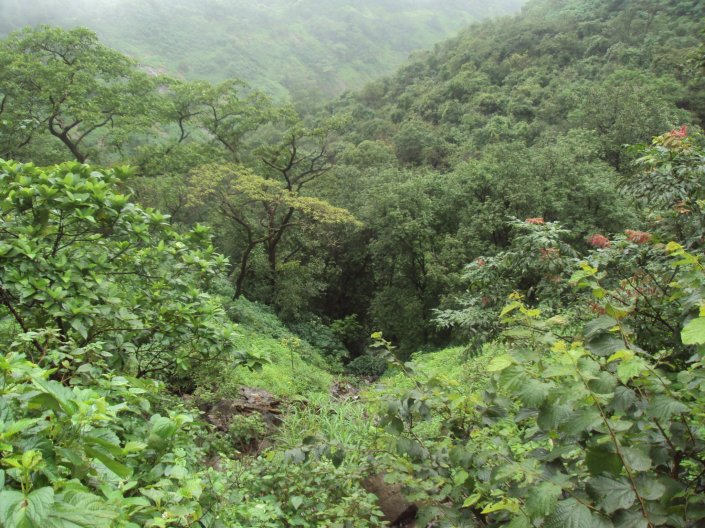 Each and every twist and turn unwinds mesmerizing views…..
Each and every twist and turn unwinds mesmerizing views…..
Green is the color of nature, color of life….these lush green rice fields please your eyes to an extent…..
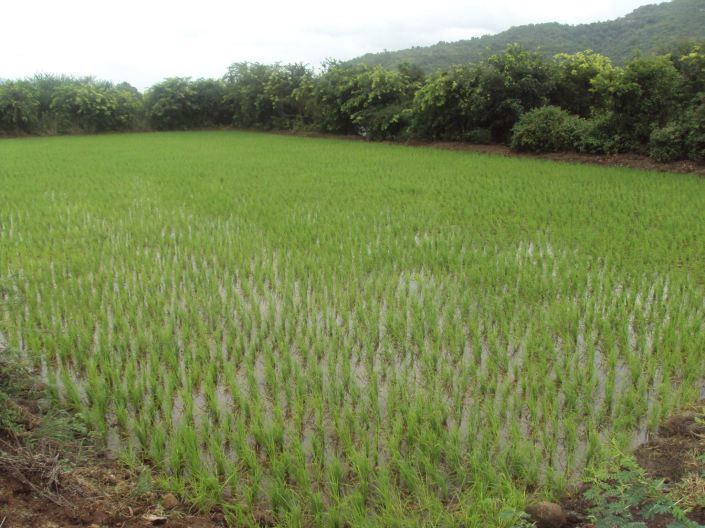 Fresh green farmlands add to the beauty of the countryside…..
Fresh green farmlands add to the beauty of the countryside…..
Widespread mountain ranges make it a perfect landscape…..
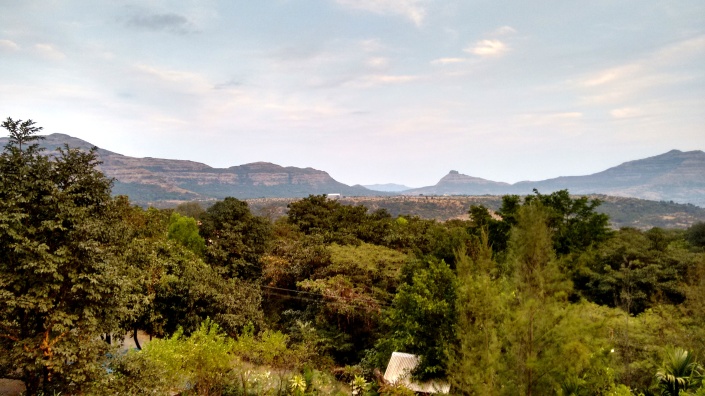 Its an amazing experience staying in wilderness of the forest….
Its an amazing experience staying in wilderness of the forest….
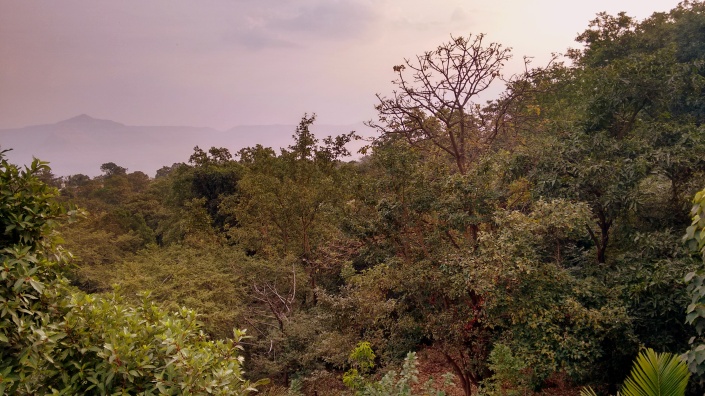
Rivers, Mountains and Skies all make it an eye catching view…..
And the whole atmosphere is such that the lazy cats tend to become lazier…. 😛
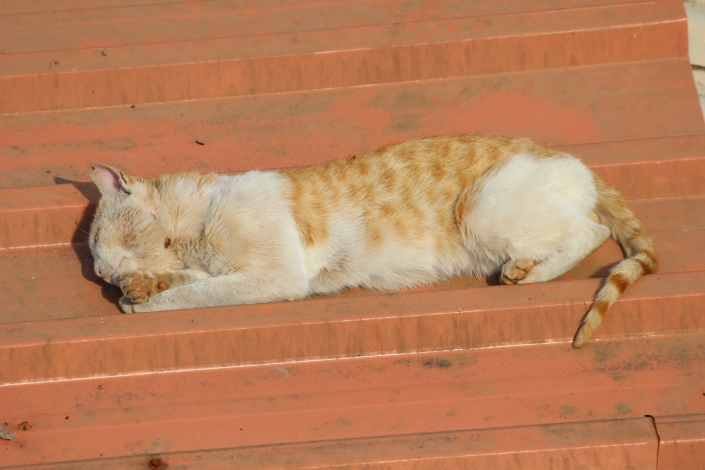 And the forest is home – sweet – home to these guys as well …..
And the forest is home – sweet – home to these guys as well …..
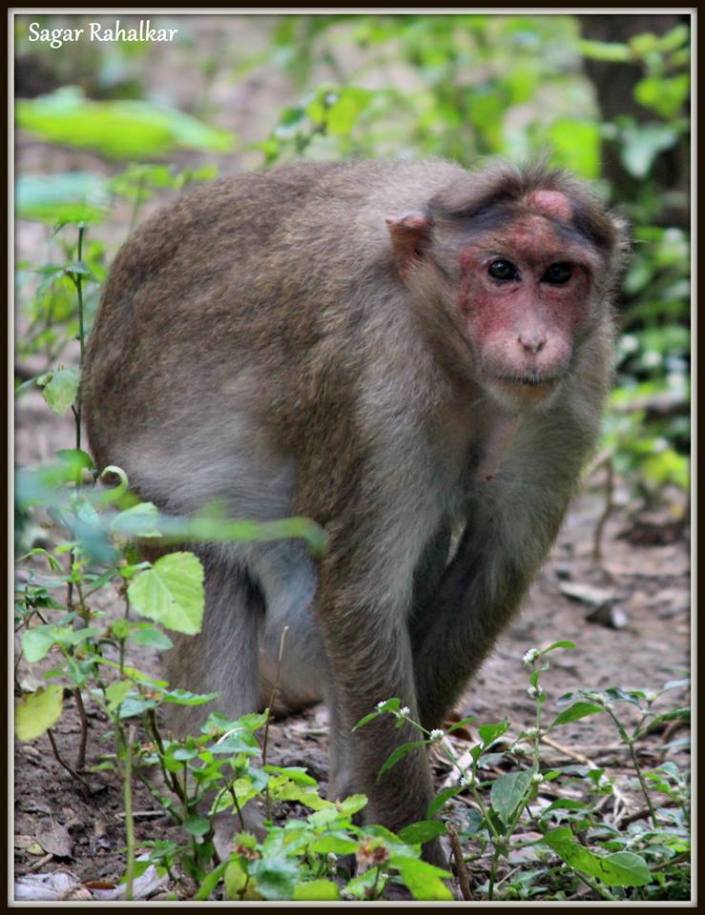 You really don’t need to be an ornithologist to watch birds…..birds are wonderful creatures on this planet, always delighting us with their beauty!!
You really don’t need to be an ornithologist to watch birds…..birds are wonderful creatures on this planet, always delighting us with their beauty!!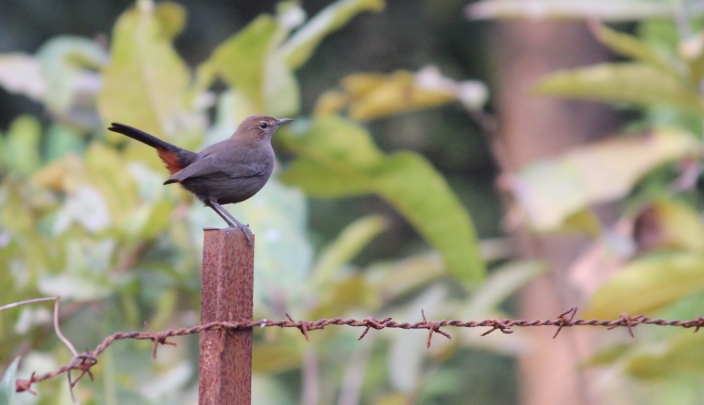
A brisk walk in the tranquility of nature truly refreshes you from within…![IMG_20150128_114229[1]](https://travelwithsagar.wordpress.com/wp-content/uploads/2015/01/img_20150128_1142291.jpg?w=705&h=470) And these are my ingredients for making a perfect holiday recipe….
And these are my ingredients for making a perfect holiday recipe….
Mesmerizing Western Ghats!!
About Western Ghats:
The Western Ghats are a mountain range that runs almost parallel to the western coast of Indian peninsula, located entirely in India. It is a UNESCO World Heritage Site and is one of the eight “hottest hotspots” of biological diversity in the world. It is sometimes called the Great Escarpment of India.The range runs north to south along the western edge of the Deccan Plateau, and separates the plateau from a narrow coastal plain, called Konkan, along the Arabian Sea. A total of thirty nine properties including national parks, wildlife sanctuaries and reserve forests were designated as world heritage sites – twenty in Kerala, ten in Karnataka, five in Tamil Nadu and four in Maharashtra.
The range starts near the border of Gujarat and Maharashtra, south of the Tapti river, and runs approximately 1,600 km (990 mi) through the states of Maharashtra, Goa, Karnataka, Tamil Nadu and Kerala ending at Kanyakumari, at the southern tip of India. These hills cover 160,000 km2 (62,000 sq mi) and form the catchment area for complex riverine drainage systems that drain almost 40% of India. The Western Ghats block southwest monsoon winds from reaching the Deccan Plateau. The average elevation is around 1,200 m (3,900 ft).
The area is one of the world’s ten “Hottest biodiversity hotspots” and has over 7,400 species of flowering plants, 139 mammal species, 508 bird species, 179 amphibian species and 288 freshwater fish species; it is likely that many undiscovered species live in the Western Ghats. At least 325 globally threatened species occur in the Western Ghats.
Significance of Western Ghats:
Western Ghats is one of the 33 recognized ecologically sensitive zones in the World. India has four such sensitive zones. They are the Western Ghats, the Eastern Himalayas, the Himalayan Range between Kashmir and Uttar Pradesh and the Andaman Islands. The Andamans along with the islands of Malaysia are an important sensitive zone. The significance of the Western Ghats is that along with its rich biodiversity, it also supports a rich environment-dependent civilization of several thousand years.
UNESCO World Heritage Site
In 2006, India applied to the UNESCO MAB for the Western Ghats to be listed as a protected World Heritage Site.[29] In 2012 following 39 places are declared as World Heritage Sites:[30][31]
- Kalakkad Mundanthurai Tiger Reserve
- Shendurney Wildlife Sanctuary
- Neyyar Wildlife Sanctuary
- Peppara Wildlife Sanctuary
- Kulathupuzha Range
- Palode Range
- Periyar Tiger Reserve
- Ranni Forest Division
- Konni Forest Division
- Achankovil Forest Division
- Srivilliputtur Wildlife Sanctuary
- Tirunelveli (North) Forest Division (part)
- Eravikulam National Park (and proposed extension)
- Grass Hills National Park
- Karian Chola National Park
- Karian Shola (part of Parambikulam Wildlife Sanctuary)
- Mankulam Range
- Chinnar Wildlife Sanctuary
- Mannavan Shola
- Silent Valley National Park
- New Amarambalam Reserved Forest
- Mukurthi National Park
- Kalikavu Range
- Attapadi Reserved Forest
- Pushpagiri Wildlife Sanctuary
- Brahmagiri Wildlife Sanctuary
- Talakaveri Wildlife Sanctuary
- Padinalknad Reserved Forest
- Kerti Reserved Forest
- Aralam Wildlife Sanctuary
- Kudremukh National Park
- Someshwara Wildlife Sanctuary
- Someshwara Reserved Forest
- Agumbe Reserved Forest
- Balahalli Reserved Forest
- Kaas Plateau
- Koyna Wildlife Sanctuary
- Chandoli National Park
- Radhanagari Wildlife Sanctuary
Okay Western Ghats and Bio-Diversity all sound good, but why should I care?
Bio Diversity Huh?? For those who know me, might be thinking who am I to write on topic like Bio-Diversity (or for those who don’t know me, I have had nothing to do with any subject other than computers in my whole life so far). Well, I am certainly not a “Bio Diversity” expert or a researcher. Nor I have read enough literature on Bio-Diversity to the extent that I write on it individually. Ohh then why am I writing this article? Just out of my own interest (you can read “About” page for more on my interests) I recently joined a certificate course in Ornithology (Ornithology is branch of zoology which relates to study of Birds). So, I happened to hear a very good session on what is Bio-Diversity, why is it important and how do we conserve it. At first I listened to it passively. But later when I gave a deep thought on what I heard, I felt it interesting as well as extremely crucial. Almost all of us live a kind of mechanical, stressful, artificial and “virtual” life. We hardly care if any species of bird or insect gets endangered or even extinct. But this carelessness is causing the basis for long term damage to the eco-system we all belong to. So just as I felt interested and enlightened after hearing about Bio-Diversity issues, I thought I should pass the message to as many people as I can and try to contribute a small bit in conserving our Bio-Diversity.
I personally feel that I am lucky enough to be born in country like India which is truly blessed by nature. India as a geographical region is extremely rich in Bio-Diversity. It has grasslands, deserts, evergreen forests, snow mountains, exotic coastline and marine life.. Its like all-in-one package. Many geographical regions across other continents have very limited bio-diversity as compared to India. So we should feel the pride and care for it. If we don’t then the entire eco-system gets slowly disturbed and ultimately its we who are going to suffer. (recent incidents of flood, tsunami, earthquakes have already proved that. If we don’t care for nature, nature would rebel against mankind! The bitter truth better to be understood.) Now one would think how do I care? Well there’s a lot you can do. Conservation is of utmost importance! Next though that might have popped up in your mind is as a common citizen what can I do to conserve nature? So here are few things:
1) Avoid using plastic material and don’t litter. Especially when you go out for a picnic, don’t throw out any plastic or waste. Use dust bin and proper disposals for same.
2) When you go out in lapse of nature, avoid playing loud music and honking. Now you would question that how would that help? Well animals, birds are quite sensitive to sound. Now lets say there is a habitat of some bird species in a particular area. If tourists pass by that area playing loud music and honking then birds in that area would feel unsafe and simply fly away thus disturbing the overall eco-system. Similarly avoid using perfumes and deo-sprays while going out for nature hike.
3) Learn to love the nature in true way. Plant trees @home, install bird feeders etc. And spread the word about greatness of nature. Almost all of us click countless snaps of rivers, mountains, birds etc when we go out for picnic. But what happens to them when we come back? Nothing! Instead share those images with as many people as you can and try to convey the beauty of nature. Its important to cultivate the sense of nature love within children. Buy books on birds, watch beautiful nature documentaries (instead of many stupid movies)!
Okay! enough said, I have made a small attempt to capture the beauty of northern region of Western Ghats. Please spare your 10 minutes and be assured to get a mesmerizing experience of Western Ghats… Hope you enjoy….
The intention behind making this clip is to spread to message of “Love Nature” and to showcase the majestic beauty of Western Ghats in India. If you are interested in visiting any of the places in this clip do message me. I’ll be more than happy to provide you with necessary details.
A Day’s excursion to Morachi Chincholi
About Morachi Chincholi:
Chincholi Morachi or Morachi Chincholi (मोराची चिंचोळी), by name itself means a village of tamarind trees (Marathi:चिंच Chincha) & town of Dancing Peacocks (Marathi:मोर More) all around. It is situated near Ahmednagar-Pune Highway about 55 km from Pune. Even today, one can find lot of peacocks everywhere in this small village. This village gives you a true feel of Indian countryside!
Reaching Morachi Chincholi:
Its about 55 KM from Pune and 188 KM from Mumbai. (Nearest Airport and Railway station is Pune).
What is so special about this place?
Peacock (Indian Peafowl) is the national bird of India. It is a large and brightly colored bird of the pheasant family native to South Asia, but introduced and semi-feral in many other parts of the world. The species was first named and described by Linnaeus in 1758. The Indian Peafowl is found mainly on the ground in open forest or on land under cultivation where they forage for berries, grains but will also prey on snakes, lizards, and small rodents. Their loud calls make them easy to detect, and in forest areas often indicate the presence of a predator such as a tiger. They forage on the ground in small groups and will usually try to escape on foot through undergrowth and avoid flying, though they will fly into tall trees to roost. The bird is celebrated in Indian and Greek mythology and is the national bird of India. The Indian Peafowl is listed as of Least Concern by the International Union for Conservation of Nature (IUCN). So, these beautiful creatures are obviously not found in crowded city areas. To see them in wild, you either need to visit some national park, sanctuary or other forest like areas around the city. And yes another place to spot these birds is the “Morachi Chincholi”. It offers you a unique opportunity to observer peacocks in their natural habitat. Though you need to be lucky to spot wild animals, sighting of a peacock is almost guaranteed here at Morachi Chincholi. Thanks to the wholehearted efforts of the local villagers.
My travel experience:
We started from Pune at around 10AM. Followed the route from kharadi -> Wagholi -> Lonikand -> Koregaon Bhima -> Sanaswadi -> Shikrapur and then took left turn towards Morachi Chincholi. Its around 24KM from the highway. There are many farm houses and Agro tourism centers in Morachi Chincholi. I had planned to visit “Mauli Agro Tourism” (http://www.chincholimorachi.com/chincholi-morachi-contact-persons/). It is not really mandatory that you have to visit some of the farm house or agro tourism center however if you don’t do so, there’s really nothing much you can do to spend quality time. So reached Mauli Agro tourism center by 12PM. We got refreshed by the welcome drink – “Limbu Sarbat” (Lemon Juice). This place is a typical countryside farmhouse. For me it was a “photography” treat. So many types of flowers, insects, birds…… truly amazing! There is an artificial lake prepared in Mauli Agro tourism center which hosts a paddle boat as well. So enjoyed boating in the lake and clicked some snaps of the birds around it. We then had lunch. The lunch was simple home made food yet quite satisfying. Then had a quick nap under tree shade :). Mr. Thopate (guide and owner of this place) took us for a tractor ride around the village. This was altogether a different experience and spotted many peacocks roaming freely on the agricultural lands. The villagers here, put grains around their houses in order to feed peacocks. So peacocks have got used to this and they visit near the houses twice a day, early morning and in the evening before sunset. So it was around 5Pm and we were eagerly waiting for peacocks to give us a closer appearance! Bingo! Slowly many peacocks started coming close to the (artificial) lake where grains were put for feeding. This is what I was waiting for and the prime reason I came here…. I clicked quick snaps as many as I could 🙂 The day proved out to be worth!!





Cost Facts:
- Charges at Mauli Agro Tourism center are 400Rs per person for whole day (includes breakfast, lunch, tractor ride, boating, evening tea and snacks etc) For overnight stay, they charge 1000Rs per person per day. Please visit their website for updated rates / discounts. (This suggestion is purely based on my personal experience. There is no specific intention to promote this place.)
- If you are traveling from Pune and going to return on same day, you’ll have to pay 56Rs as Toll charges.
- Petrol / Diesel charges depend on the medium of transportation you choose.
Quick Tips:
- “Morachi Chincholi” showcases a true ideal Indian village with all traditional culture. Please don’t expect star grade luxury in this place or multi-cuisine food joints. Visit this place to enjoy its simplicity.
- Peacocks at this place are somewhat used to locals living in the village but are shy to tourists. So don’t make loud noises, sounds that would make peacocks disappear. Peacocks are very shy. If they feel that their is some new person in the area (mainly tourist) which would be a possible threat, then they won’t come out of their hiding areas for 2-3 days. Thus you’ll get disappointed of not spotting these beautiful creatures. So be calm, quiet and observe them from a safe distance.
- If you are a photographer interested in “Aviation Photography” then Lonikand is a place worth taking into consideration. This place is only 9.7 Nautical Miles (air distance) away from Pune International Airport. So the air-crafts which are about to land at Pune, can be seen very closely from streets of Lonikand. You can get some cools snaps 🙂 however you’ll have to plan your timings by referring plane arrival schedule!!
Other places worth visiting near Morachi Chincholi:
| Sr.No | Location | Distance From Morachi Chincholi | Map |
| 1 | Nighoj Pot Holes | 24.8 KM | Morachi chincholi to Nighoj Pot Holes |
| 2 | Ranjangaon Ganpati Temple | 23.7 KM | Morachi Chincholi to Ranjangaon Ganpati Temple |
| 3 | Saradwadi (Famous for Misal Paav) | 29.6 KM | Morachi Chincholi to Saradwadi |

























































































































